get their hands on their


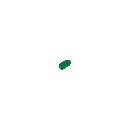








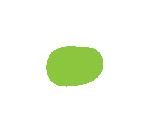
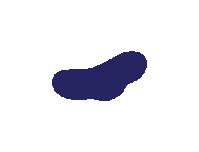

not only a multitude of excited Jollibee patrons waiting
favorites, but also first-timers waiting to have their own Jollibee experience," said Jose Miñana, Jollibee Foods Corporation's Group President for North America. "There's no greater joy for us than serving the needs and tastes of Jollibee fans in the community. At Jollibee, we aim to bring families together for happy moments over great tasting food with superior value, served with warm and friendly service –our own brand of joy." The brand has become a symbol of nostalgia and warm childhood memories for many overseas Filipinos in the U.S. To many, Jollibee is the go-to restaurant of Filipinos for both special
See JOLLIBEE page 15

FREEZE PROTECTION THE ENDORSED PUBLICATION OF THE FLORIDA BLUEBERRY GROWERS ASSOCIATION www.FloridaBlueberryGrowers.org volume 11
issue 2
winter 2022 TOPIC OF THE SEASON Pest and Disease Management for Prebloom Through Harvested Fruit PREPARING FOR WINTER Helpful Resources, Plus a Freeze Protection Checklist WATER MATTERS Basics of Winter Irrigation Management A PERSISTENT PEST Control Measures for Blueberry Gall Midge ‘POWER PERIOD’ USHBC to Leverage National Nutrition Month PRSRT STD US POSTAGE PAID WEST PALM BEACH,FL PERMIT NO. 4595 ipation and excitement, Jollibee, the largest Asian restaurant company, is now open in Jacksonville. This is
36th store in the
as
the first in the
Southeast US. It opened to the public on March 18,
Jacksonville is the most populous city in the Sunshine
as
home to the largest FilipinoAmerican community in Florida.
longawaited arrival of Jollibee in the city has anticipate
|
|
the
US,
well as
state and
2017.
State,
well as
The
seeing
to
Jollibee
With the opening, Floridians will get to try Jollibee's signature menu items such as the world famous Chickenjoy. This dish is delicately breaded to be crispylicious on the outside and juicylicious inside. The well-loved Jolly Spaghetti is a favorite of both kids and kids-at-heart because of its signature sweetstyle sauce, loaded with chunky slices of savory ham, ground meat, and hotdog. Other classic menufavorites include the juicy and cheesy Jolly Hotdog, and the Peach Mango Pie, which is made with real Philippine sweet mangoes and a flaky golden brown crust. edition
Improved productivity and easier gear shifting with new transmission options. Integrated AutoTracTM guidance and other technologies. Pull heavier implements with up to 125 HP Do it all in the tractor that best fits the needs of your operation.

ON THE COVER
Ice protects a field of blueberries at Florida Blue Farms near Gainesville. As the new year gets underway, many blueberry growers are already thinking about the possibility of damaging freezes. During late winter and early spring, growers will make important decisions about if or when to protect against a potentially damaging freeze. We’ve put together a useful checklist and also included several resources that growers may find helpful. Read more on page 8.
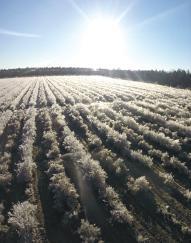 photo by BRITTANY LEE
photo by BRITTANY LEE
10 A PERSISTENT PEST









Blueberry gall midge is a longstanding and persistent pest of blueberries in Florida, especially in North-Central Florida and some areas of Central Florida. Adult BGM lay eggs in floral and vegetative buds as the scales begin to open, and the larvae feed on the developing tissue in the buds. With floral buds, this leads to damage, necrosis, and death of the buds, resulting in reduced yields. Effective BGM control involves monitoring, preventative sprays, and observation-based sprays.
15 MINIMIZE THE RISK OF ANTHRACNOSE FRUIT ROT

Anthracnose fruit rot (AFR) is the most significant disease that directly affects the fruit of blueberries in Florida. In years past, AFR, also known as ripe rot, has been of minor concern for Florida growers. However, reports of substantial losses are on the rise. Let’s talk about factors that can promote disease and management tools to reduce disease risk in your field.
30 WATER MATTERS
Irrigation is an important cultural practice as blueberry plants emerge from winter, initiate growth, and move through the various stages of flowering, fruit set, fruit development, and postharvest summer growth. Irrigation requirements change throughout the year based on crop development and weather.

36 SEIZING A KEY OPPORTUNITY FOR BLUEBERRY PROMOTION
17215
FL 34715-9273

352-394-7181
With health and nutrition being key benefits of blueberries, National Nutrition Month in March is a natural fit for the U.S. Highbush Blueberry Council to rally around and leverage as its first “power period” of 2022. USHBC’s March activations will encourage creating fearlessly nourishing meals and snacks that fit into individual lifestyles, honor global cuisines and traditions, and cater to varying taste preferences.
2 | The Blueberry News 4 Executive Director's Letter 6 President's Letter 10 Bug of the Month 11 Topic of the Season 15 Grower's Thoughts 21 Grower 411 28 Publisher's Interlude 28 Meeting Preview 32 Recipe Corner 33 Classifieds
FREEZE PROTECTION THEENDORSEDPUBLICATIONOF THEFLORIDABLUEBERRYGROWERSASSOCIATION www.FloridaBlueberryGrowers.org volume 11 | issue 2 | winter 2022 TOPIC OF THE SEASONPest and ManagementDisease for Prebloom Through Harvested Fruit PREPARING FOR WINTERHelpful Resources, Plus a Freeze Protection Checklist WATER MATTERS Basics of IrrigationWinterManagementA PERSISTENT PEST Control Measures for Blueberry Gall Midge ‘POWER PERIOD’ USHBC to Leverage National Nutrition Month Appetizer s: Entrées: Advertisers Directory 2 Appell Pie 2 Calendar Events 10 Classified Ads 14 What’s Going On 3 Analysis:Cateringindustryrevenuesontherise 4 “Big Data” — Doesyourrestaurantneedit? 7 RiseBisquitsDonutstoopeninCoralSprings 11 Del Taco spices up expansion in the Southeast 13 STDPRSRT POSTAGEPAID BEACH,FLPALMWEST 4595NO.PERMIT WWW.TRNUSA.COM VOLUME 21 NUMBER 3 ◆ MARCH 2017 FLORIDA’S FOODSERVICE INDUSTRY NEWSPAPER ◆ $3 FLORIDA EDITION Jollibee's U.S. expansion continues with first Florida location opening Jacksonville, FL After much anticipation and excitement, Jollibee, the largest Asian restaurant company, is now open in Jacksonville. This the 36th store in the US, as well as the first in the state and Southeast US. It opened to the public on March 18,2017.Jacksonvillethemostpopulouscityin the Sunshine State, as well as home to the largest FilipinoAmerican community in Florida. The longawaited arrival of Jollibee in the city has "As Jollibee debuts in Florida, we anticipate seeing not only multitude of excited Jollibee patrons waiting to get their hands on their Jollibee favorites, but also first-timers waiting to have their own Jollibee experience," said Jose Miñana, Jollibee Foods Corporation's Group President for North America. "There's no greater joy for us than serving the needs and tastes of Jollibee fans in the community. At Jollibee, we aim to bring families together for happy moments over great tasting food with superior value, served with warm and friendly service our own brand of joy."Thebrand has become symbol of nostalgia and warm childhood memories for many overseas Filipinos in the U.S. To many, Jollibee is the go-to restaurant of Filipinos for both special been the talk of the town since 2016. With the opening, Floridians will get to try Jollibee's signature menu items such as the world famous Chickenjoy. This dish is delicately breaded to be crispylicious on the outside and juicylicious inside. The well-loved Jolly Spaghetti a favorite of both kids and kids-at-heart because of its signature sweetstyle sauce, loaded with chunky slices of savory ham, ground meat, and hotdog. Other classic menufavorites include the juicy and cheesy Jolly Hotdog, and the Peach Mango Pie, which made with real Philippine sweet mangoes and flaky golden brown crust. See JOLLIBEE page 15 and sustainable sourcing, local and seasonal produce, and global flavors and forms, all done within the steakhouse format showcasing cuts of meat as entrées with choice of sides. Moreover, new menu categories (such as flatbreads) and service elements freshen the concept. About the Report 2017 Forecast: Culinary Trend Tracking Series offers an outlook on the culinary trends—the foods, dishes, ingredients and flavors—that Packaged Facts expects to grow in popularity in 2017. Rockville, MD When it comes to American cuisine, there are few things more iconic than steakhouses. The slabs of marbled meat, the sizzling grills, the oozing butter, and the dripping bravado, maybe even a cowboy hat or two for ambiance—it's enough to make even fictional steakophile Ron Swanson misty-eyed. Yet for all the traditional steak dinners ordered daily, there are restaurants nationwide pushing the concept of the all-American steakhouse to new culinary heights, according to market research firm Packaged Facts in the brand new report 2017 Forecast: Culinary Trend Tracking Series. "The steakhouse is back and will capture our attention in 2017. Not that the classic restaurant style ever disappeared, but renewal of the model is taking place in response to new sources of beef and new flavorful expressions of the concept that get chefs and diners excited," says David Sprinkle, research director, Packaged Facts. Today's steakhouse menus increasingly feature grass-fed cattle, locally raised animals, heritage varieties, meat butchered and dry aged in-house, and dishes that stem from the whole animal, not just the premium cuts. And that's just the meat. Creative side dishes in lieu of old standards, global and seasonal flavors, and wider menu selection also distinguish these new school operations. Chefs and consumers both want their meat to taste delicious and to feel good about its’ consumption, too. This new breed of steakhouse broadcasts its mission to support local ranchers, factor in sustainability and animal welfare, and create dining experience that showcases culinary flair, not just grill master's skill at cooking steak to the requested doneness. These operations are also designed to be more inclusive, more of a great place for all kinds of people to dine well, not just traditionminded men on expense accounts. As a result, the modern steakhouse increasingly similar to other modern restaurants with focus on distinctive 2017 forecast:Steakhouses beef up menus with new twists on American classics See STEAKHOUSE page 11 edition
fieldsequip.com
3203 HAVENDALE BLVD WINTER HAVEN, FL 33881 863-967-0602
3440 US HIGHWAY 17 SOUTH ZOLFO SPRINGS, FL 33890-0837 863-735-1122
HIGHWAY 27 NORTH MINNEOLA,
us today,
Premium Features. Right-Sized Trac tor. 5M Utility Trac tor.
N0B0101XCU2F81412-00090427 Contact
or visit JohnDeere.com/5M to learn more.


FloridaBlueberryGrowers.org The Blueberry News | 3 When one cold night can ruin an entire year’s hard work... It’s best to play it safe. Since 1967, we have hand-crafted our wind machines with precision technology. We take pride in the details, which is why blueberry growers from around the world trust Orchard-Rite® wind machines to protect their mature stock and new plantings from the dangers of frost. We are dedicated to serving you and your crops by providing the tools, knowledge and service to stave off those frosty nights, protecting your harvest and your future. Superior Wind Machine Sales & Service 616-971-8177 orchard-rite.com Authorized Distributor of Orchard-Rite® Wind Machines SUPERIOR WIND MACHINE SERVICE, INC. Over 37,000 SOLD Worldwide!
Coming Together in the Fight for Our Industry
AS THE NEW YEAR gets underway, the Florida blueberry industry has much to look forward to. Blueberries have a bright future!
This past year, the North American Blueberry Council organized a Trade Task Force to address the issues our growers have faced in recent pre-pandemic years that have only been exacerbated by the 2020 closure or limitation of purchasers and the supply chain issues that have only gotten more severe as the duration of the pandemic continues to extend.


The Trade Task Force was comprised of leaders from every major international importer, and leadership from the domestic industry with every state represented. Our own past president and Florida Blueberry Grower Hall of Fame recipient Ken Patterson chaired this committee and led the charge to find common ground amongst the industry.
President Kasey Cronquist has made increasing demand a priority, and the USHBC & NABC are diligently working to do so through promotions and finding new export opportunities.
The entire industry is committed to working together. To aid with these efforts, the USHBC/NABC added a new position, Vice President of Industry Engagement and Education, and recently hired Amanda Griffin to fill the role. Griffin will serve as a liaison to growers. She is charged with advancing member engagement and launching/ overseeing a blueberry industry leadership program. She will be looking for new opportunities to partner with trade organizations, universities, and government agencies as well as leading USHBC and NABC events programming. Griffin’s new position is just one example of USHBC/NABC’s commitment to advancing the industry, and Florida is involved and we will make sure our Florida growers have an equal voice.
Our industry groups, state commissions and associations are synergistically working together, collaborating, for a united and stronger industry. What does that mean for the Florida grower? That means a more stable marketplace and increased opportunities to market and export our product.
I invite you to join me in Tampa on March 1- 4 for the joint NABC/ USHBC Spring Meeting. Registration launched in early January.
The world is run by those who show up. Let’s make Florida the bestrepresented state at this meeting in our backyard and witness firsthand what is going on behind the scenes in our industry to make blueberries the number one fruit in consumers’ carts!
Brittany H. Lee
Brittany H. Lee, Executive Director, Florida Blueberry Growers Association
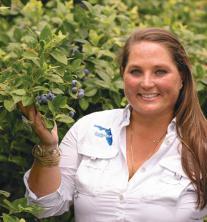
fbga.ed@gmail.com
PUBLISHER
Nelson Kirkland
MANAGING EDITOR
Jessica McDonald
DIGITAL ACCOUNT MANAGER
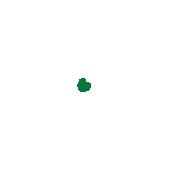
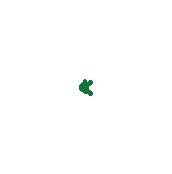

Alexis Duncan
ACCOUNT EXECUTIVE
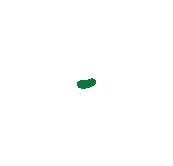
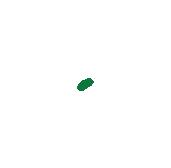



Juanita Halter
LIAISON EDITORS
Brittany H. Lee, Doug Phillips, Jeff Williamson
CONTRIBUTING WRITERS
Doug Phillips, Jeff Williamson, Peter Dittmar, Jeff Williamson, Jenni Sparks, Oscar Liburd, Phil Harmon
CONTRIBUTING PHOTOGRAPHERS
Brittany Lee, Doug Phillips, Jeff Williamson
CONTRIBUTING ARTISTS
Dawn Lewandowski
DELIVERY
DLS Distributors
advertisers
be



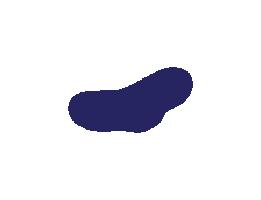
responsible, nor do
publishers accept any liability for the accuracy of statements made by advertisers in advertising and promotional materials. Furthermore, the opinions and claims expressed in advertisements and promotional materials do not necessarily reflect those of the Florida
4 | The Blueberry News FloridaBlueberryGrowers.org executive director’s letter
www.FloridaBlueberryGrowers.com Published by Central Florida Media Group in cooperation with the Florida Blueberry Growers Association Copyright © 2022 Central Florida Media Group. ALL RIGHTS RESERVED. This issue of The Blueberry News is a trademark of Central Florida Media Group. Reproduction or use in whole or in part of the contents of this magazine without written permission is prohibited. The Blueberry News makes every effort to ensure the accuracy of content published. In the event of an error found herein however, neither the publishers or
Association
an endorsement. 56 Fourth Street Northwest, Suite 100 Winter Haven, Florida PHONE 863.248.7537
will
held
the
Blueberry Growers
or Central Florida Media Group and do not imply
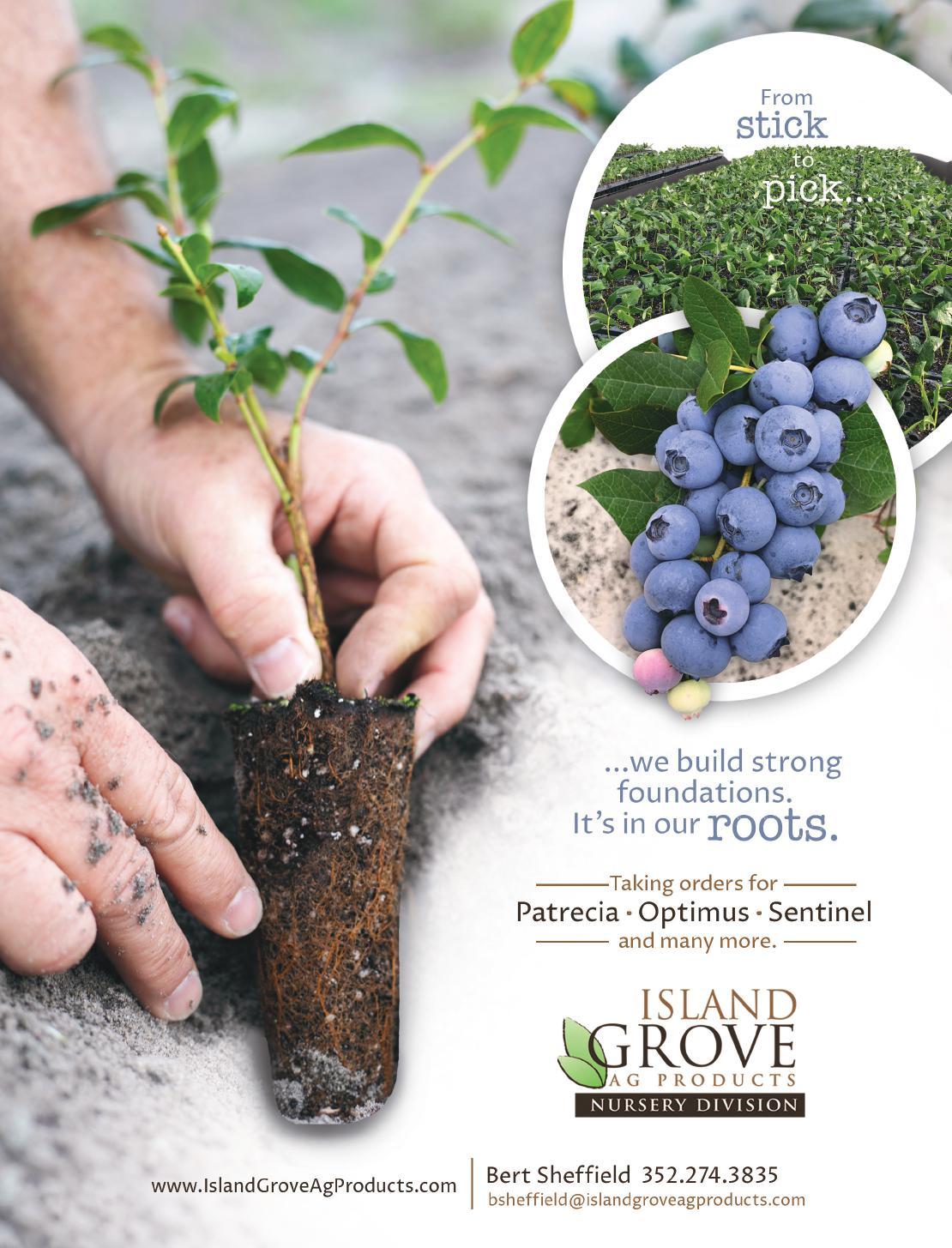
FloridaBlueberryGrowers.org 5
P.O. BOX 358086
Gainesville, FL 32635 352-448-1418

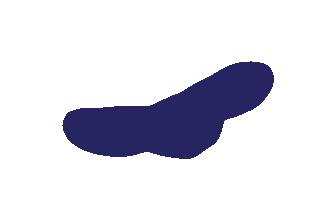
OFFICERS
Brittany Lee, Executive Director fbga.ed@gmail.com
Leonard Park, President president.fbga@gmail.com
Jerod Gross, Vice President fbga.vp@gmail.com
Michael Hill, Secretary michael@handafarms.com
Bobby Barben, Treasurer rhbjr@barbenfruit.com

The Blueberry Grower’s Pancake


By the time Florida growers read this, we’ll be waist-deep wrestling with the 2022 inflation alligator that is trying to pull our bottom line below water. American families are well aware that food inflation is biting into their home budgets. Largescale farming operations that grow commodities like corn, wheat, and soybeans and the global corporate processors are fairly good at passing along much of their cost increases to consumers. Blueberry growers are having the same cost increases, but will our small specialty industry be able to find some relief from our grocerconsumers, or will our farms be pancaked between our surging costs and the pricing lid held in place by surging imported fruit? We all know costs are taking off:
• Fertilizer is up so much that suppliers have to reprice for each delivery.
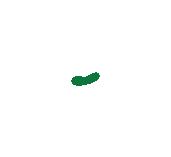




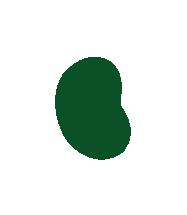
• Ag chems are up, with some herbicides doubling and unavailable.
• Labor is in short supply so agricultural wages are pressured to compete.
• Energy price increases are in everything, including tractor and truck fuel.
BOARD OF DIRECTORS
Wayne Bass
Jerod Gross
Phil Harmon
Gary Smith
Kyle Straughn
Jeff Williamson
Doug Phillips
Travis Kuhn
• And hold on for a big jump in FOB pricing for your fruit delivery this spring.

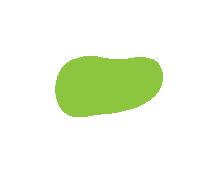
• Insurance in Florida is exploding.
• Growing supplies like irrigation, fabric, plants, and bark are moving up.



• Equipment and parts are higher… if you can get them in time to keep going.. So how do we wrestle these costs down? Fortunately, growers are pretty good at these tactics and more:

• Applying innovation and creativity
• Using process improvement
• Investing in productivity-enhancing equipment and technology
• Sharpening the pencil and keeping vendors competitive
• Employing the 80/20 rule — fixing the 20% that causes 80% of the problem
on page 38
6 | The Blueberry News FloridaBlueberryGrowers.org
president’s letter
Leonard Park President Florida Blueberry Growers Association continued
Or how Florida growers are getting squeezed between cost increases and pricing pressures.
BIGGER, BETTER BLUEBERRIES READY TO HARVEST WITH FEWER PASSES
BIGGER, BETTER BLUEBERRIES READY TO HARVEST WITH FEWER PASSES
The benefits of Dormex® make even more sense for today’s blueberry grower as labor gets harder to source and you make the move to mechanization.
The benefits of Dormex® make even more sense for today’s blueberry grower as labor gets harder to source and you make the move to mechanization.
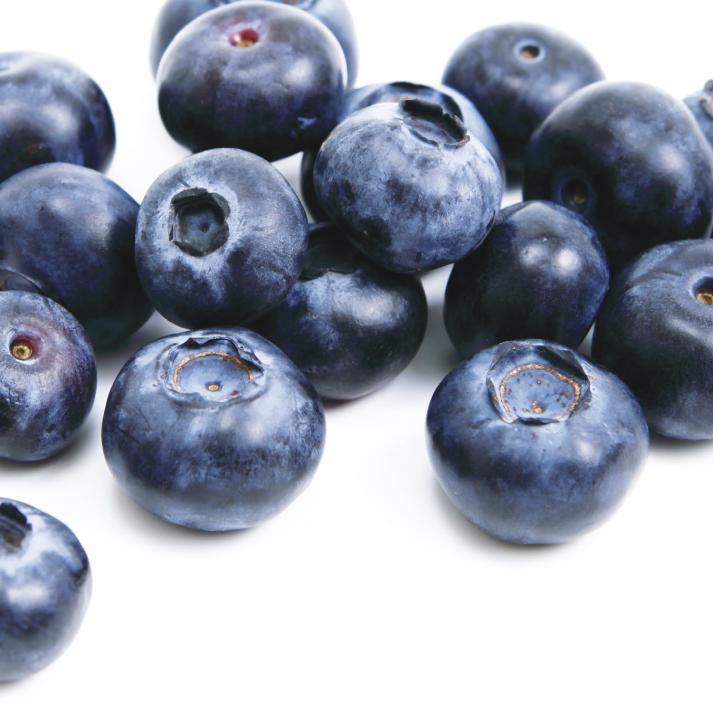

Dormex® helps manage the crop right from the start. You’ll see buds and blooms together, so the plants put more energy into the growing crop. The consistency of the berries makes all the difference when it’s time to harvest. With Dormex®, you have more berries ready in a narrower window, so you can get more fruit with each pass. Fewer passes through the field means you have less impact on the plants and remaining berries.
Dormex® helps manage the crop right from the start. You’ll see buds and blooms together, so the plants put more energy into the growing crop. The consistency of the berries makes all the difference when it’s time to harvest. With Dormex®, you have more berries ready in a narrower window, so you can get more fruit with each pass. Fewer passes through the field means you have less impact on the plants and remaining berries.
For years, you’ve trusted your blueberries to Dormex® to help you manage bud break, fruit size uniformity. Now you can rely on Dormex® to help with your harvest challenges as well.
For years, you’ve trusted your blueberries to Dormex® to help you manage bud break, fruit size and uniformity. Now you can rely on Dormex® to help with your harvest challenges
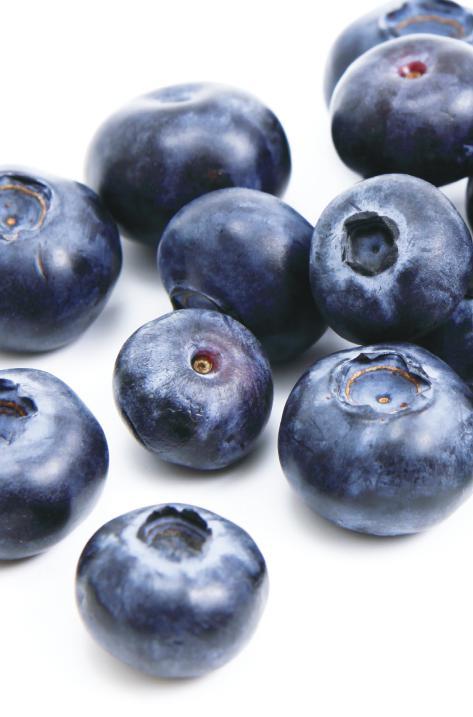

FloridaBlueberryGrowers.org The Blueberry News | 7
Dormex bears the Verbund seal, your assurance of German engineered quality and full potency. INNOVATION SINCE 1908 JOHN STRICKLAND Sales Representative P +1 912 520 0220 M jwstrickland7@gmail.com WWW.ALZCHEM.COM ©2018 AlzChem Trostberg GmbH. All rights reserved. Dormex® and the Dormex® logo are trademarks of AlzChem Trostberg GmbH. BIGGER BERRIES LLC RYAN ATWOOD Sales Representative P +1 352 267 3229 M atwoodag@gmail.com To learn more, visit: WWW.FRUITIFORMITY.COM
Only
Only Dormex bears the Verbund seal, your assurance of German engineered quality and full potency. INNOVATION SINCE 1908 JOHN STRICKLAND Sales Representative
+1 912 520 0220 M jwstrickland7@gmail.com WWW.ALZCHEM.COM ©2018 AlzChem Trostberg GmbH. All rights reserved. Dormex® and the Dormex® logo are trademarks of AlzChem Trostberg GmbH. BIGGER BERRIES LLC RYAN ATWOOD Sales Representative P +1 352 267 3229 M atwoodag@gmail.com To learn more, visit: WWW.FRUITIFORMITY.COM
P
Preparing for the Freeze Your Winter Crop Survival Checklist
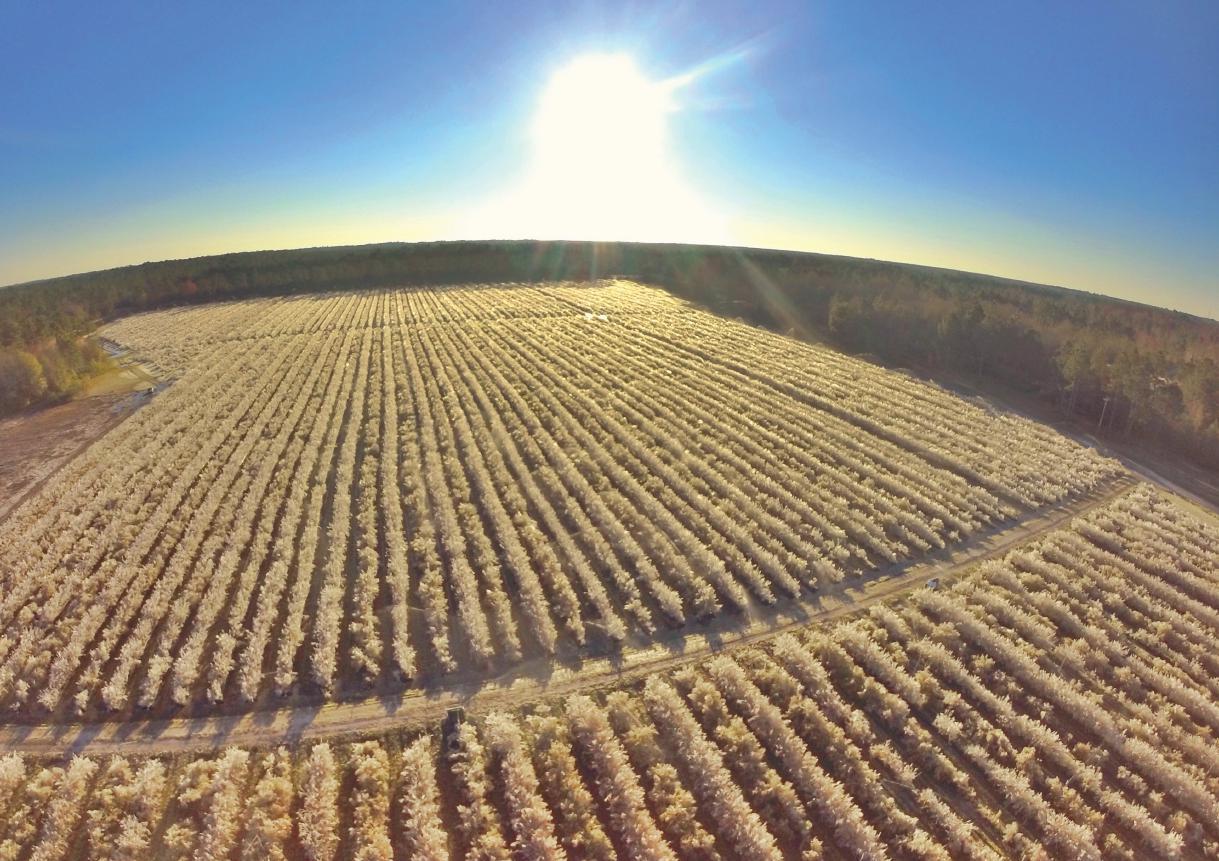
As the new year gets underway, many blueberry growers are already thinking about the upcoming bloom period and the possibility of damaging freezes. The checklist provided below is a good place to begin reviewing preparedness for protecting against damaging freezes that often occur before, during, and shortly after bloom. Being well-prepared will reduce stress and increase the likelihood of a positive outcome.
During late winter and early spring, growers will probably need to make important decisions concerning if, or when, to protect against a potentially damaging freeze(s). These can be among the most complicated and critical decisions that regularly face
blueberry growers almost every year. Many variables can affect whether or not, and when, to freeze protect. These include, but are not limited to, forecast information such as predicted minimum temperature, dew point temperature, wind speed, and length of freeze. Crop development stage (hardiness) and freeze protection system capabilities are also important considerations.
Here are several resources that growers may find helpful to review before the upcoming blueberry bloom season.
• Weathering the Winter. The Blueberry News. Vol 10 (2) January 2021.
Pp 20-12, 38 (https:// bit.ly/3EW5eEE).
• Protecting blueberries from freezes
in Florida. https://edis. ifas.ufl.edu/pdf/HS/ HS21600.pdf
• Preparing your blueberry freeze protection system. https://secure.caes. uga.edu/extension/ publications/files/ pdf/C%201128_1.PDF
• Cold Protection toolkit. Florida Automated Weather Network (FAWN), University of Florida Extension. https://fawn.ifas.ufl.edu/ tools/coldp/
• AgroClimate website. http://agroclimate.org/





8 | The Blueberry News FloridaBlueberryGrowers.org field management
Credits: BRITTANY LEE
Winter Freeze Checklist
Virtually all blueberry fields in Florida are subject to late winter or early spring freezes that can cause serious reductions in yield. Below is a list of activities for freeze preparation. The list was originally published by Mike Mainland in the North Carolina Blueberry News, Vol. 7, No. 1 and it has been modified by IFAS faculty and FBGA board members over the years.
1. Flush all overhead sprinklers to clear debris – remove heads and flush.
2. Test and service the pumping units, replace filters and have spare filters available.
3. Treat diesel tanks for water and algae.
4. Check lines and sprinklers in the field for leaks and clogged nozzles.
5. Check water pressure on ends of distant lines.
6. Make sure drainage in and around fields is adequate. Make sure roadways around and through the fields will withstand traffic at night during irrigation.
7. Remove or relocate any equipment that may impede or pose a danger to vehicular traffic.
8. Have a (remote-controlled, magnetic roof-mounted) high-intensity spotlight ready to plug into the truck to check sprinklers.
9. Put shielded minimum thermometers in cold, average, and warm areas of fields – at the average height of the middle of the bushes,
10. Consider purchasing weather stations that communicate real-time weather conditions to computers and smartphones.
11. Hang some ribbons on trees or poles around fields to detect slight breezes.
12. Identify a good source of agricultural weather information and watch it closely. Consider subscribing to a weather service that issues freeze warnings.
13. Consider purchasing a monitor that calls you when the temperature gets low.
14. Consider purchasing a handheld wind meter or anemometer to measure wind speed.
15. Consider purchasing a sling psychrometer to measure wet bulb and dry bulb temperatures, relative humidity, and dew point.
16. Have rain suits and boots available for everyone responsible for checking the irrigation system.
17. Have wires available to unclog nozzles.
18. Have tools and replacement parts that are necessary to exchange nozzles and/or sprinklers.
19. Be certain you know the “safe cutoff temperature” before you shut down your overhead freeze protection irrigation. This temperature can be as high as 40 degrees F if the dew point is low and wind is high.

20. Fill all vehicles with fuel before the freeze event.
21. Have help available or on call if needed for emergencies.
FloridaBlueberryGrowers.org The Blueberry News | 9
CREDIT by JEFF WILLIAMSON, Horticultural Sciences Department, UF & DOUG PHILLIPS, UF/IFAS Blueberry Extension Coordinator
Credits: BRITTANY LEE
A Persistent Pest Control Measures for Blueberry Gall Midge
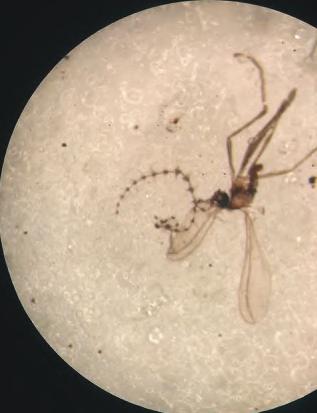
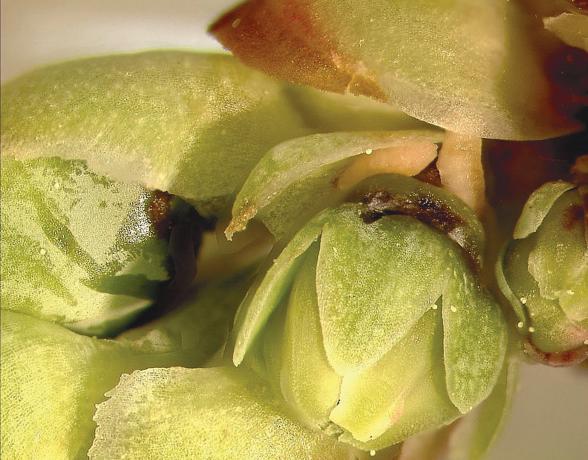
Blueberry gall midge (BGM) is a longstanding and persistent pest of blueberries in Florida, especially in North-Central Florida and some areas of Central Florida. Adult BGM lay eggs in floral and vegetative buds as the scales begin to open, and the larvae feed on the developing tissue in the buds (Figure 1). With floral buds, this leads to damage, necrosis, and death of the buds, resulting in reduced yields. The injury from gall midge can appear as brown, dried out buds that disintegrate and fall from the stems resulting in reduced bloom, and situations where only one or two florets emerge from a damaged floral bud instead of a more typical 5 or 6 florets. In vegetative buds, new emerging shoots and foliage are damaged, and appear as black and distorted tissue.
Effective BGM control involves monitoring, preventative sprays, and observation-based sprays. Monitoring for adults can be done using either bucket traps or clear sticky traps. Bucket traps have a sticky Plexiglas top, and are placed under bushes in direct contact
with the bed to trap new adults emerging from the ground. It also catches BGM larvae that fall from the bush. The suggested placement density is 3–5 traps per acre. The sticky trap is a 12- or 6-inch square sheet of transparent plastic, attached to the bush and covered with a sticky adhesive spray. The Plexiglas top or the sticky sheet must then be viewed under magnification (at least 10x) to properly identify the adult BGM. Identification can be difficult, as other midge species that are not harmful to blueberries and are similar to BGM can appear on the surface of the Plexiglas. One of the key distinguishing characteristics of BGM is the antenna structure, which looks like a series of balls connected by sticks (Figure 2).
continued on page 34
10 | The Blueberry News FloridaBlueberryGrowers.org
bug of the month
Figure 1. BGM larvae feeding on blueberry floral buds. Credits: O. Liburd, UF/IFAS
Figure 2. BGM antenna structure. Credits: D. Phillips, UF/IFAS
of the season
Prebloom Through Harvested Fruit
by DOUG PHILLIPS, UF/IFAS Blueberry Extension, JEFFREY G. WILLIAMSON, Horticultural Sciences Department, PHILIP F. HARMON, Department of Plant Pathology, OSCAR E. LIBURD, Entomology and Nematology Department, and PETER DITTMAR, Horticultural Sciences Department, all with the University of Florida/IFAS.

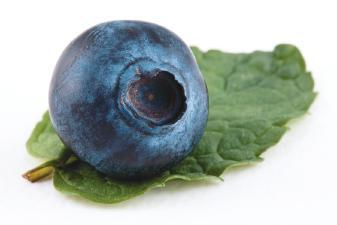

The following tables were updated from the 2022 UF/IFAS Florida Blueberry Integrated Pest Management Guide found at edis.ifas.ufl.edu/hs380. This publication is intended for use only as a guide. Specific rates and application methods are on the pesticide label, and these are subject to change at any time. Always refer to and read the pesticide label before making any application! The pesticide label supersedes any information contained in this guide, and it is the legal document referenced for application standards.
POLLINATOR PROTECTION

Before making insecticide applications, monitor insect populations to determine if treatment is needed. If insecticide application is necessary:
1. Use selective pesticides to reduce risk to pollinators and other non-target beneficial insects.
2. Read and follow all pesticide label directions and precautions. The label is the Law! EPA now requires the addition of a “Protection of Pollinators” advisory box on certain pesticide labels. Look for the bee hazard icon in the Directions for Use and within crop specific sections for instructions to protect bees and other insect pollinators.
3. Minimize infield exposure of bees to pesticides by avoiding applications when bees are actively foraging in the crops. Bee flower visitation rate is highest in early morning. Apply pesticides in the late afternoon or early evening to allow for maximum residue degradation before bees return the next morning. Bee foraging activity is also dependent upon time of year (temperature) and stage of crop growth. The greatest risk of bee exposure is during bloom.
4. Minimize off-target movement of pesticide applications by following label directions to minimize off-target movement of pesticides. Do not make pesticide applications when the wind is blowing towards bee hives or off-site pollinator habitats.
PREBLOOM THROUGH GREEN TIP (LEAF BUDS) AND PINK BUD (FLOWER BUDS)
Phomopsis Cane and Twig Blight: Phomopsis cane and twig blight is a fungal disease caused by Phomopsis vaccinii, which is spread to uninfected plants by wind and rain. Characteristic symptoms are dark-brown lesions on fruiting twigs (often surrounding floral buds), dieback of young twigs, and shriveling of flower and fruit clusters on diseased stems. Dying tissue may spread down the twig until most of the flower buds on an individual twig die. Shriveling of flowers and fruit clusters may appear similar to Botrytis damage. Control measures include fungicide applications and pruning out infected twigs. See Table 1.
Blueberry Gall Midge: The blueberry gall midge (BGM) is a tiny fly whose larvae feed on vegetative and floral buds. Typically, gall midge will attack young developing floral and leaf buds, which will cause floral buds to abort or fall off the bush, resulting in poor flowering and “fruit set.” With heavy gall midge injury to floral buds, there would be a lighter bloom. Instead of the usual 5 to 6 buds producing several flowers, only 2 may reach maturity, resulting in poor fruit clusters. Blueberry gall midge will also feed on leaf or vegetative buds, leaving young leaves deformed and misshaped. Gall midges lay eggs on warm winter days and at any time during the growing season when the plants are making new flushes of growth. Delegate® (Spinetoram), Exirel® (Cyantraniliprole), diazinon (if labeled for use on your site), Apta® (Tolfenpyrad), and Movento® (Spirotetramat) can be applied for gall midge control between flower bud stages 2 and 3. Application should take place when the most mature buds first show slight scale separation. Sprays may need to be repeated during warm spells. Gall midge sprays can also suppress a prebloom thrips population. See Table 2 and EDIS publication ENY-997, “Blueberry Gall Midge on Southern Highbush Blueberry in Florida” (https://edis.ifas.ufl.edu/publication/IN1239).
10%–20% BLOOM THROUGH 80%–90% BLOOM
Alternaria and Anthracnose Fruit Rots: Alternaria fruit rot occurs most frequently when fruit is not timely harvested and remains on the bush for too long. Symptoms include dark-green to black sporulation on ripe fruit and sunken areas near the calyx end of the berry. In postharvest storage, green to gray fuzzy growth may appear on infected fruit, especially if the berries have remained wet or were not properly cooled. Preventive fungicide applications can be made to help minimize disease development.
continued on next page
FloridaBlueberryGrowers.org The Blueberry News | 11 topic
topic of the season
continued from previous page
10%–20% BLOOM THROUGH 80%–90% BLOOM, CONT.
Anthracnose fruit rot is also referred to as "ripe rot." Infection may occur as early as bloom, with symptoms appearing as the fruit begins to ripen, including shriveling, development of sunken lesions, soft, rotted fruit, and eruption of orange- or salmon-colored spore masses on the blossom end of the fruit. In some cases, symptoms do not appear until after the fruit is harvested and stored. Fungicide applications from bloom through harvest prevent significant ripe rot losses most years when coupled with frequent hand-harvesting and rapid-cooling practices that are standard for southern highbush blueberry growers in Florida. Preharvest fungicides are especially important in years where there is a high incidence of disease in the field coupled with warm, wet weather, which can promote disease development. See Table 1 and EDIS publication PP337, “Anthracnose on Southern Highbush Blueberry” (https://edis.ifas.ufl.edu/publication/PP337).
Botrytis Flower Blight: Botrytis blossom blight, caused by the fungus Botrytis cinerea, most commonly infects and blights wounded or senescent plant tissues. As a blueberry bush blooms, corollas (the fused petal of the flowers) senesce and become quite susceptible to infection. Ideally the corolla should drop from the flower after pollination but before senescence occurs. Frost damage on tender new growth may wound the plant, delay petal drop, and facilitate infection by the fungus. The development of Botrytis blight, like many other foliar fungal diseases, is highly dependent on environmental conditions. During bloom, periods of low temperatures combined with extended periods of high relative humidity result in more than 24 hours of leaf wetness and increase likelihood of significant disease development. If the blight continues, an entire cluster of berries can be aborted. When disease is severe, berry reduction can become economically important. Infected berries are sometimes deformed and may develop further rot if environmental conditions later become favorable for disease. After pollination of a flower and drop of the corolla, the risk of infection of the developing fruit is reduced. Economic loss due to Botrytis can be minimized by limited use of irrigation for freeze protection and judicious fungicide applications. See Table 1 and EDIS publication PP198, “Botrytis Blossom Blight on Southern Highbush Blueberry” (https://edis.ifas.ufl.edu/publication/PP119).
Flower Thrips: These are small insects (i.e., 1/16 of an inch in length), yellowish to orange in color with fringed wings. Flower thrips damage blueberry flowers in two ways. Larvae and adults feed on all parts of the flowers, including ovaries, styles, petals, and developing fruit. This feeding damage can reduce the quality and quantity of the fruit produced. Females damage the fruit when they lay their eggs inside flower tissues. The newly hatched larvae bore holes in the flower tissues when they emerge. Flower thrips can be very damaging to flower buds and blooms. Thrips numbers typically increase dramatically as corollas open and bloom progresses. Determining when or if blueberries should be treated for thrips is difficult. Blueberries are a pollination-sensitive crop, and careless use of insecticides and subsequent bee kill can easily impair pollination and ruin fruit set. Only selected insecticides (Delegate®) should be used during bloom. If Delegate® is used, the insecticide should be applied in the early morning or late evening and be given 3 hours of drying time before bees are allowed to forage on the crop. To measure treatment thresholds for southern highbush and rabbiteye blueberries, begin sampling bloom clusters as soon as the flower begins to open. Sample four to five areas in a 1-acre block by placing a white sheet under a flower cluster and tapping lightly. Count the number of flowers and count the number of thrips dislodged from the flower cluster. If you average more than four thrips (southern highbush) or three thrips (rabbiteye) per flower, some type of management is recommended. Alternatively, two white sticky traps could be used to monitor a 5-acre block (one on the border and one in the center). If you have more than 80–100 thrips (southern highbush) or 60–70 thrips (rabbiteye), then some type of management tactic is needed. Assail® and Apta® are the material of choice until 5 days prebloom. See Table 2.
PETAL FALL THROUGH ONE MONTH AFTER BLOOM
Alternaria and Anthracnose Fruit Rots: See discussion above.

Phytophthora Root Rot: Phytophthora root rot (PRR) is considered the most serious soilborne disease that affects southern highbush blueberries (SHB). Some SHB cultivars are considered tolerant and others highly susceptible, while rabbiteye cultivars are less affected by the disease. PRR is caused by the oomycete pathogen Phytophthoracinnamomi. Common aboveground symptoms associated with Phytophthora infections are reductions in plant vigor and premature fall discoloration. Symptoms at ground level and belowground include crown and root rots. Disease on susceptible hosts occurs when certain environmental conditions (primarily a saturated root zone and root wounding) trigger Phytophthora reproduction, infection and symptom development. PRR is typically more severe in low and poorly drained areas of a farm. The pathogen causes root discoloration (dark brown to black, instead of the normal cinnamon brown) and decay. Advanced stages of infection cause plant stunting, wilting, an abnormal or reduced root system, root rot, and plant dieback. Leaf discoloration also typically occurs, including yellowing, reddening with or without marginal burn, abnormal growth of new leaves, and defoliation. Plants affected by PRR may also be more susceptible to other dieback diseases including stem blight. Fungicides with the active ingredient mefenoxam, such as Ridomil Gold SL, are recommended where PRR occurs and are applied twice yearly (typically in January and June) through drip irrigation or as a band application directly to the bed. In addition to the phenylamide fungicide mefenoxam, which is applied to the soil, Aliette (FosetylAl 80%) and numerous phosphorous acid products, referred to as “phites” or phosphonates, provide some control when applied as summer foliar sprays. See Table 1.
Blueberry Gall Midge: See discussion above.
continued on page 14
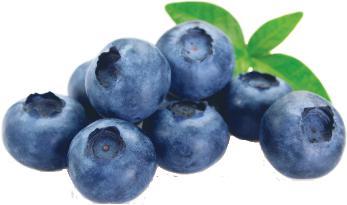
12 | The Blueberry News FloridaBlueberryGrowers.org

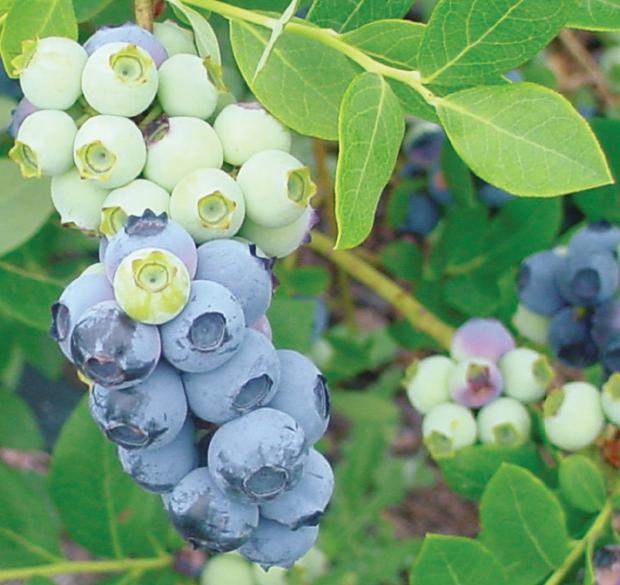
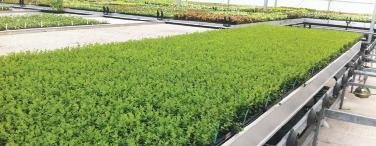
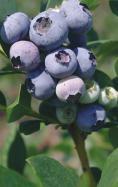


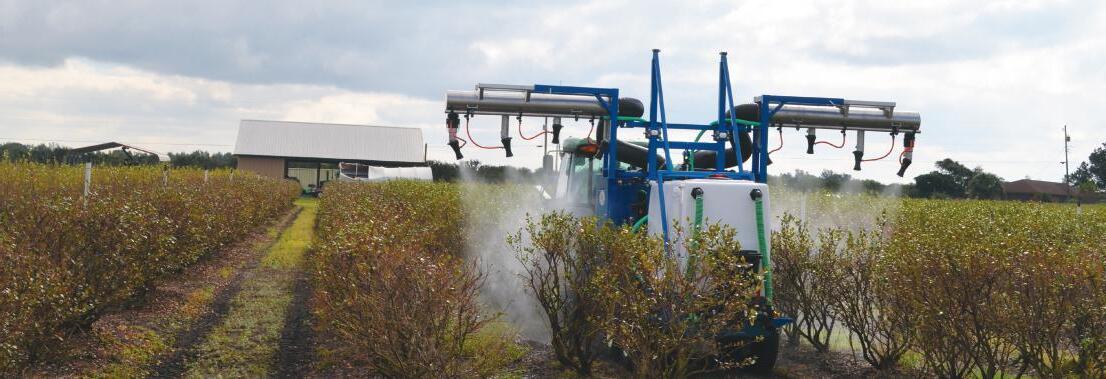
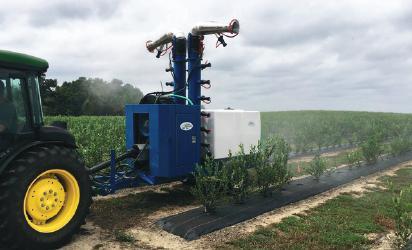
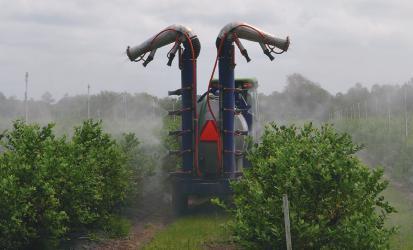



FloridaBlueberryGrowers.org The Blueberry News | 13 Virus indexed plants from tissue culture available in 72ct. cell packs & field ready liners. Agri-Starts, Inc. is a licensed propagator of Florida Foundation Seed Producers, University of Georgia Research Foundation, and University of Arkansas genetics. COME VISIT US ANYTIME! BLUEBERRIES BLACKBERRIES & MORE! AGRISTARTS.COM (407) 889-8055 - info@agristarts.com 1728 Kelly Park Rd. - Apopka, FL 32712 Agristarts Ad 7.5x5.indd 1 9/9/16 5:59 PM CALL FOR A QUOTE TODAY! • 863-293-5420 4202 Hammond Drive • Winter Haven, FL 33881 • AirtecSprayers.com FOR ALL YOUR BLUEBERRY NEEDS! Type of Sprayers: • Air Boom • Cannon • Herbicide • Double Cannon • Skid w/Gun • Injection Trailers Models: • Single or tandem axle trailers • Tanks sizes - 100 to 500 gal. • Low profile & narrow designs • Single or double cannons A irtec Sprayers Inc Ask us about the latest cost share programs
topic of the season
continued from page 12
PETAL FALL THROUGH ONE MONTH AFTER BLOOM, CONT.
Cranberry Fruitworm, Cherry Fruitworm, and Plum Curculio: Review field histories and scout fields for fruitworms and plum curculio to determine if and when spraying is needed. In Florida production areas, plum curculio has not been found to be a pest of southern highbush and rabbiteye blueberries. Fields with a history of infestation should be sprayed at least twice on a 7-to-14-day interval, beginning immediately after bloom. Check for fruitworms twice a week from full bloom until 4 weeks after petal fall. Examine fruit clusters for tiny pinsized holes in berries and for frass and premature ripening in more mature fruit. Break berries open to look for larvae and damage. Early varieties are normally infested first. Control will be best when these insects are sprayed early in the infestation period. See Table 2.
PREHARVEST FRUIT
Alternaria and Anthracnose Fruit Rots: See discussion above.

HARVESTED FRUIT
Alternaria and Anthracnose Fruit Rots: See discussion above. Pre- and postharvest rots can be greatly reduced by timely, complete harvest of all ripe fruit on the bush, followed by rapid postharvest cooling. For hand-harvested highbush and southern highbush cultivars, harvest all ripe berries on the bush every 7 days or less. Rabbiteye cultivars should be clean-harvested every 10–14 days. Postharvest cooling is critical and is best accomplished through the use of partial-vacuum or forced-air systems that use fans to pull cold air through stacks of palletized fruit. See Table 1.
Blueberry Maggot: Blueberry maggot (BBM) is only a problem for growers north of the Lake City and Live Oak areas. Growers in Gainesville and south of Gainesville should not experience any problems with blueberry maggot. Blueberry maggot is a late-season pest. If berries are infested with BBM, a whitish maggot will appear in the fruit at harvesting. The adult fly that lays the eggs can be monitored by hanging yellow sticky traps (baited with ammonium acetate) within the bush canopy, at least one per cultivar. Trap catches indicate when adults are present. Traps should be hung in the planting when berries begin to turn from full green to the greenish-pink stage. See your county Extension agent for identification pictures and further reference. If your planting has a history of BBM infestation, spray as soon as adults are trapped. Once spraying for BBM begins, it is very important to spray every 7–14 days until all the fruit has been harvested. Materials and spray intervals are listed below. All growers in Florida who are shipping blueberries to Canada or the United Kingdom must comply with appropriate guidelines for scouting, spraying, and postharvest inspection of berries, including a protocol for cooking samples of harvested fruit to test for the presence of the maggot in berries. The Canadian protocol states that blueberries must be certified maggot-free to enter Canada. See Table 2.

Diaprepes (Citrus Root Weevil): Diaprepes larvae damage blueberry plants by feeding on the roots, including channeling and holes in the roots and feeding injury and girdling near the crown of the plant. Note that this damage is frequently observed some period of time after the larvae begin to feed on the roots, and at that point damage near the crown can appear similar to the effects of root girdling or mechanical wounding and abrasion. These injuries can kill or cause serious decline in blueberry plants and may also create an entry point for Phytophthora, causing a root rot infection. Management and control should target both the adult and larval stages. Control for adults consists of foliar insecticide sprays every 10–14 days when adults are active, beginning when 3 or more adults are found within 1-acre blocks. Larvae can be managed with insecticides either by directly drenching the soil area beneath the plant canopy or by applying them through drip or microjet irrigation systems. In addition, entomopathogenic nematodes may have potential for controlling root weevil larvae in blueberry. See Table 2 and EDIS publication ENY-999, “Diaprepes Root Weevil on Southern Highbush Blueberry in Florida” (https://edis. ifas.ufl.edu/publication/IN1241).
Flatheaded Borers: Flatheaded borers are a species of beetle in the Chrysobothris genus. The larvae tunnel through plant canes, ultimately killing the cane and acting as an entry point for disease. It is possible that adult beetles are attracted to stressed or damaged blueberry canes, with adult females laying eggs on the injured area, and larvae excavating tunnels just beneath the bark. This is a relatively new pest in blueberry, and research is ongoing regarding its life cycle, monitoring and trapping protocols, and control measures. See Table 2.
Spotted Wing Drosophila: Spotted Wing Drosophila (SWD) have been caught in all principal blueberry counties in Florida. Adults lay eggs in ripening blueberries, and larvae develop inside the berry, making the fruits soft and unmarketable. Adults can be monitored by placing traps in blueberry bushes. Traps can be made from plastic cups and baited with yeast sugar water. Traps should be placed within the canopy of the blueberry bush and not in direct sunlight. A number of insecticides have recently been registered for control of spotted wing drosophila. See Table 2 and EDIS publication ENY-861, “Spotted Wing Drosophila in Florida Berry Culture” (https://edis.ifas.ufl.edu/ publication/IN839).
continued on page 16
14 | The Blueberry News FloridaBlueberryGrowers.org
Minimize The Risk of Anthracnose Fruit Rot
Anthracnose fruit rot (AFR) is the most significant disease that directly affects the fruit of blueberries in Florida. In years past, AFR, also known as ripe rot, has been of minor concern for Florida growers; however, within the last three to five years, reports of substantial losses are on the rise. In this article, we will try to understand the disease cycle, factors that can promote disease, and management tools to reduce disease risk in your field. AFR is a real heartbreaker that can not only reduce the amount of harvestable fruit just as the year’s investment starts to pay out but then come back with the sucker punch of reducing the quality and quantity of the harvested berries due to fruit spoilage, lower pack-outs, and shorter shelf life.
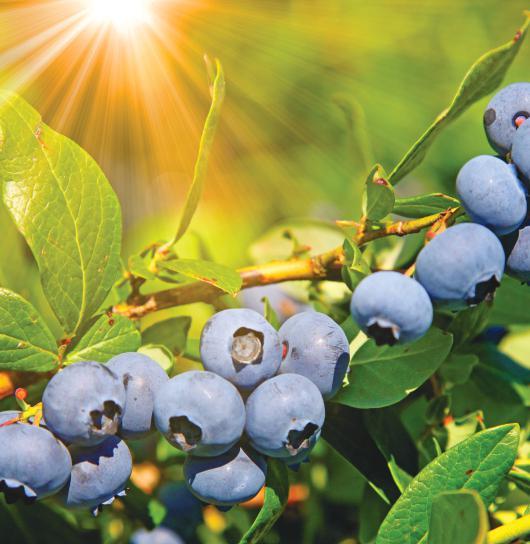
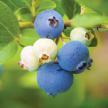
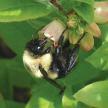


Like many of our disease concerns on blueberry, AFR is caused by a common fungal pathogen, Colletotrichum gloeosporioides. It is easily identifiable on the berries it destroys because of the bright orange slime produced on the sunken surface of the soft rotting blue fruit. That orange slime contains tens of thousands of tiny spores that can spread the disease through water splash or on contaminated surfaces the fruit may come into contact with. Infection can occur as early as bloom but then usually lays in wait without producing any visible symptom (latent infection) until fruit ripening, when the fungus begins breaking down the fruit from the inside. Orange slimy spores produced on damaged or soft harvested fruit can then infect other blue fruit during the post-harvest sort and pack, sparking off a potential chain reaction of secondary spoilage. The process is impacted by the environment in the field, the method of harvest, and postharvest storage conditions. Changes to both the horticultural practices of our industry and within the pathogen population have contributed to the recent uptick of AFR damage and losses.
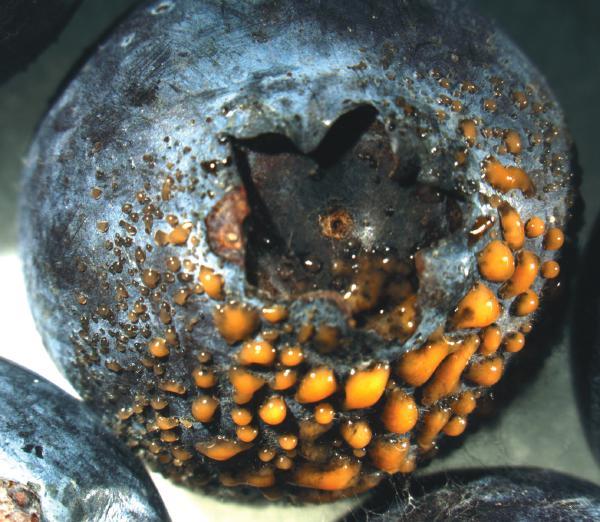
Where does it come from each season? The pathogen is very common on dead and damaged twigs, leaves, and other plant parts where it can survive by breaking down the dead tissues (as

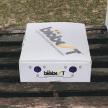
FloridaBlueberryGrowers.org The Blueberry News | 15 ✓ better fruit size ✓ uniform fruit weight and size ✓ reduce your pollination deficit Maximize Pollination with 4-Pak TM Personalized solutions, trusted advice Biobest naturally! www.biobestgroup.com Why use Biobest 4-Pak™? • work through inclement weather; wind, rain and cloud cover • 4-Pak™ works as a complement to current pollination strategies • Bumblebees focus on the targeted crop Biobest USA | Toll free 1 (855) 224 6237 customerservice.na@biobestgroup.com continued on page 17
grower’s thoughts 888.296.7533 . WWW.CARDENINSURANCE.COM We keep you growing... carden SPECIALIZED RISK MANAGEMENT FOR THE AGRICULTURE INDUSTRY . CAR DEN & ASSOCIATES, INC.
topic of the season
continued from page 14
TABLE 1. DISEASE MANAGEMENT OPTIONS
These tables list registered pesticides that should be integrated with other pest management methods. Additional information on integrated pest management methods can be requested from UF/IFAS Extension horticulture or agriculture Extension agents. A list of local UF/IFAS Extension county offices is at available at https://ifas.ufl.edu/.
Metconazole (Quash®)
Prothioconazole (Proline® 480 SC)
Fluopyram + pyrimethanil (Luna Tranquility®)
pt ? 12 h 30 days
2.5 oz ? 12 h 7 days
5.7 fl oz ? 12 h 7 days
13.6–27 fl oz ? 12 h 0 days
Resistance to this fungicide in the ripe rot pathogen is common in central Florida. Use a Captan product in a tank mix where resistance is known. Subsequent applications can be made at 7-to-14-day intervals. Do not apply more than two sequential applications before switching to a fungicide with another mode of action (e.g., Switch®). Do not apply more than 1.44 qt per acre per season.
Applications can be made at 7-to-10-day intervals when conditions warrant. Do not apply more than 56 oz of product per acre per year. Make no more than two sequential applications before using another fungicide with a different mode of action.
Resistance to this fungicide in the ripe rot pathogen is common in central Florida. Use a Captan product in a tank mix where resistance is known. Do not mix Pristine® with anything other than Captan.
Do not use more than 7.5 pt per acre per season. Do not tank mix with an adjuvant.
Do not make more than three applications per acre per crop year. Alternate with a fungicide with another mode of action.
Make up to 2 applications per year on a 7–10 day schedule. A tank mix with Captan is recommended for resistance management and to provide Botrytis suppression.

Do not apply more than 54.7 fl oz per acre per year. Rotate to a different fungicide group after no more than 2 applications. Reapplication interval is 7 to 14 days. Only Luna Tranquility is labeled by supplemental label for blueberry in Florida.
continued on page 18

16 | The Blueberry News FloridaBlueberryGrowers.org
Disease/Pest Problem Management Options Amount of Formulation per Acre Effectiveness (Least = + to most = +++++) REI (restricted entry interval) PHI (postharvest interval) Comments Anthracnose (ripe rot) and Alternaria rots Azoxystrobin (Abound®) 6.2–15.4 fl oz +++++ 4 h 0 days
+ fludioxonil (Switch® 62.5WG) 11–14 oz +++++ 12 h 0 days
Cyprodinil
Pyraclostrobin + boscalid (Pristine®) 18.5–23 oz +++++ 12 h 0 days
(Ziram 76DF) 3 lb ++ 48 h ~30
Captan (Captan 50 WP) 5 lb +++ 48 h 0 days
Captan (Captan 4L®) 2 qt +++ 48 h 0
1.25
Ziram
days Do not apply later than 3 weeks after full bloom.
Do not apply more than 70 lb per acre per crop year.
days Do not apply more than 35 qt per crop year. Fluazinam (Omega® 500F)
a saprophyte) during winter. The fungus is not very active when temperatures are low and conditions are dry. It overwinters on bud scales and infected twigs, and in evergreen systems, it can carry over to the new season in leaf spots within the canopies of infected plants. When temperatures are mild to warm (between 68° and 77°F), and rain events or overhead irrigation keep foliage wet for extended periods (typically eight hours or more), spores are produced on these infected plant parts, becoming a source of infection for flowers and fruit. How much sporulation, and how favorable those conditions are following spore production, determine the number of successful infections and the incidence and severity of the ensuing disease. Each warm-wet period from bloom through harvest represents another opportunity for the pathogen to infect fruit, and for us to try to prevent it from being successful. It can be hard to understand management efforts during this time, although we can’t see the disease doing anything yet, pay dividends at and after harvest when our management options are more limited and less effective (an ounce of prevention is worth a pound of [berries] cure).
So how do we know when the infections are occurring? — keep reading, there’s a tool for that.

There are three primary angles of attack when dealing with AFR:
1) Reduce the amount of fungus present to potentially infect;
2) Modify the environment to reduce the likelihood of fungus that is present being able to successfully infect plants and cause symptoms;
3) Protect the plants when the environment is favorable and the fungus is present.
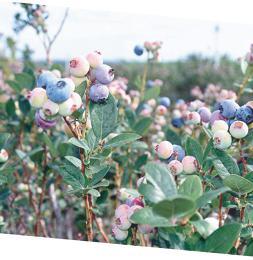
Efforts to reduce the pathogen can only go so far, but general sanitation efforts are one important step. Sanitation can mean bush maintenance to remove from the field twiggy dieback and dead plants prior to bloom, managing late-season anthracnose leaf spot disease (particularly in evergreen production), and taking steps to disinfect/sanitize harvesting equipment like totes or contact surfaces of mechanical harvesters, as well as sorting and packing lines.
Modifying the environment in the field can be challenging since it largely depends on the weather. However, we can take steps towards moderately reducing leaf wetness duration through avoiding overhead irrigation when at all possible and by pruning the plant canopy to allow better airflow. These steps can help to minimize AFR and other diseases’ development as well. Specific to AFR, we can reduce the exposure of fruit to potential infection by taking steps to get ripe fruit out of the field and into cold storage as gently and quickly as possible by avoiding delays in harvesting and through the utilization of hand-harvest (when conditions and labor availability allow). Mechanical harvesters
have come a long way and have huge labor-saving benefits, but they are less discerning of rotting fruit, and bruised or damaged fruit are more susceptible to AFR. Regardless of the harvest method, it is much easier to control the environment once the fruit is in the cooler compared with the unpredictable conditions of leaving it in the field any longer than we have to.
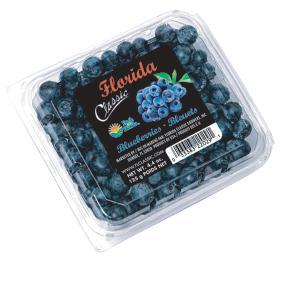

continued on page 19
Harvesting. Packing. Marketing.
Our company is a wholly owned subsidiar y of Dundee Citrus Growers Association which has been in business since 1924.

We are a vertically integrated company that offers harvesting, packing and marketing ser vices
Our “Florida Classic” brand is a well-recognized and respected label throughout the United States and Canada.
Our packing facility is conveniently located one mile East of Highway 27 in Dundee
FloridaBlueberryGrowers.org The Blueberry News | 17
grower’s thoughts , cont.
from page 15
Figure 1. Anthracnose fruit rot risk chart.
UN D E E BER RY G R OWER S ASSOCI ATIO N
Accepting New Growers
D
Currently
Contact
B. Callaham steven.callaham@dun-d com | 863.287.2636 111 1st Street Nor th, Dundee, FL 33838-1739
Steven
topic of the season
continued from page 16
TABLE 1. DISEASE MANAGEMENT OPTIONS, CONT.
Fenhexamid
Fluopyram + pyrimethanil (Luna Tranquility®)
13.6–27 fl oz ? 12 h 0 days
Ziram (Ziram 76DF) 3 lb
Make the first application during early bloom. Subsequent applications should be made every 7–10 days during bloom. Do not apply more than 56 oz of product per acre per year. Make no more than two sequential applications before using another fungicide with a different mode of action.
Begin application at 10% bloom. Applications should be made every 7 days when conditions favor disease. Resistance is known to occur; do not make more than two consecutive applications without switching to a fungicide with a different mode of action. Do not apply more than 6.0 lb of product per acre per year.
Resistance is known to occur; no more than two sequential applications of Pristine® should be made before alternating with fungicides that have a different mode of action. Do not apply more than four applications of Pristine® per acre per crop year. Do not mix Pristine® with anything other than Captan.
Do not apply more than 54.7 fl oz per acre per year. Rotate to a different fungicide group after no more than 2 applications. Reapplication interval is 7 to 14 days.
Do not apply later than 3 weeks after full bloom. Captan (Captan
48 h ~30 days
Do not apply more than 70 lb per acre per crop year.
Do not apply more than 35 qt per acre per crop year.
Apply Aliette® as a foliar spray for Phytophthora and Pythium root rots and Septoria leaf spot. Subsequent applications can be made at 14-to-21-day intervals. Two or three fungicide applications following harvest are generally sufficient to prevent major outbreaks of Septoria leaf spot. Assuming that hedging is conducted immediately following harvest, this is a good time to consider an application. Do not exceed four applications per acre per year.
Do not tank mix with copper and foliar fertilizers and do not apply in acidic water or add acidifying agents, because these practices could damage fruit or foliage. When tankmixing this product with others, test the mix on a small area to make sure that phytotoxicity does not occur. Mefenoxam


48 h 0 days
Established plants: Apply ¼ pt./1000 linear feet of row (3.6 pt. per acre broadcast basis) in a 3-foot band over the row. One application prior to bloom and one additional application, post-harvest, approximately 6 months later.
continued on page 22
18 | The Blueberry News FloridaBlueberryGrowers.org
Disease/Pest Problem Management Options Amount of Formulation per Acre Effectiveness (Least = + to most = +++++) REI (restricted entry interval) PHI (postharvest interval) Comments
+ fludioxonil (Switch® 62.5WG)
Botrytis flower blight Cyprodinil
11–14 oz. +++++ 12 h 0 days
(Elevate® 50 WDG)
1.5 lb +++++ 12 h 0 days
Pyraclostrobin + boscalid (Pristine®) 18.5–23 oz +++++ 12 h
0 days
++
50WP) 5 lb. ++ 48 h 0 days
(Captan
Captan
4L®) 2 qt. ++ 48 h 0 days
root rot Fosetyl-Al (Aliette® WDG) 5 lb +++
Phytophthora
12 h 12 h
Gold® SL)
++++
(Ridomil
3.6 pt
Finally, we have tools available to help us protect fruit from infection when all else fails and our susceptible blooms and berries come into contact with the pathogen that has evaded our efforts and during a period when the conditions favor infection. Application of suggested fungicides during bloom and fruit development can help reduce the risk of AFR. These include the products suggested in Table 1, Anthracnose Fruit Rot Options. Many growers apply fungicides preventatively using a calendar-based method, typically at seven- to 10-day intervals. An alternative is to use risk signals from the Blueberry Advisory System (http://cloud.agroclimate.org/tools/bas/dashboard/ disease) to time fungicide applications (Figure 1, page 17), possibly reducing the number of applications while maintaining a similar level of control. Users of this tool will receive a text and/ or email notification when there is a moderate or high level of risk for the development of AFR. Growers may also choose to put out a less costly fungicide like Captan when the risk is only moderate, and save
more expensive (and effective) products for use during periods of high levels of risk for their area.
In summary, AFR continues to be a disease of increasing importance. Shifts to a higher proportion of evergreen production and machine harvesting, climate trends toward warmer, wetter conditions during bloom through harvest, and the loss of efficacy of the QoI group of fungicides (Pristine, Abound) due to fungicide resistance all seem to suggest this will be an ongoing issue for the industry moving forward. By implementing suggested cultural and chemical controls during bloom and fruit development, growers can help reduce the risk of AFR infection and development.
Table 1. Anthracnose Fruit Rot Management Options

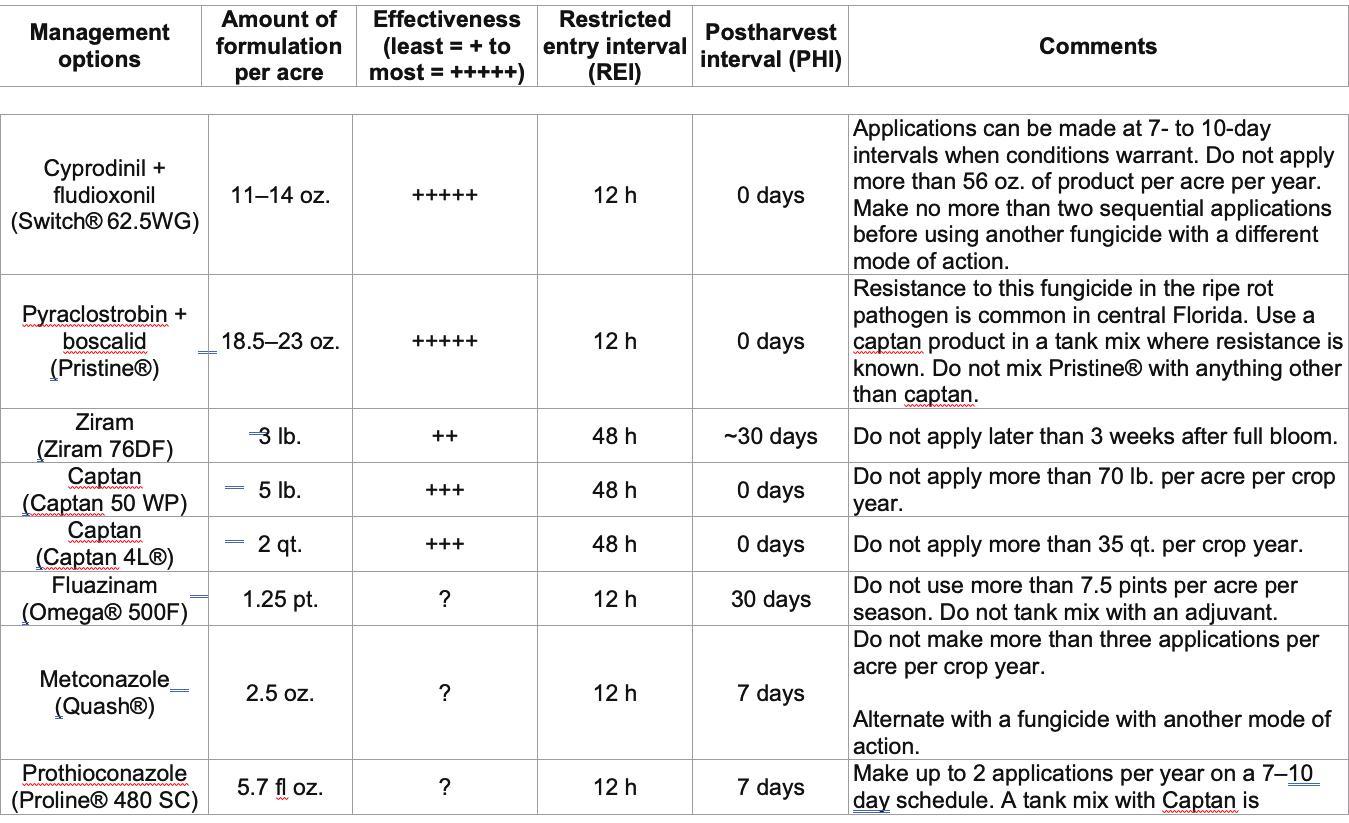
FloridaBlueberryGrowers.org The Blueberry News | 19
grower’s
thoughts , cont. from page 17
CREDIT by PHIL HARMON, Professor, UF Plant Pathology Department & DOUG PHILLIPS, Blueberry Extension Coordinator, UF Horticultural Sciences Department
by DOUG PHILLIPS,
Remember to take a look at the UF/IFAS Blueberry Growers Guide phone app for field scouting tools, as well as information on all of the UF southern highbush blueberry cultivars.

iOS:
https://apps.apple.com/us/app/ uf-blueberry-growers-guide/ id1535258711
Suggested Blueberry Management Items for January Through March
The tables below list suggested blueberry management items for January through March. Suggested management items for the entire calendar year are available in an EDIS publication, Calendar for Southern Highbush Blueberry Management in Florida (https://edis.ifas.ufl.edu/pdffiles/HS/HS136300.pdf). Specific disease, insect, and weed controls are listed in the 2022 Florida Blueberry IPM Guide (https://edis.ifas.ufl.edu/ publication/hs380) as well as in subject-specific publications referenced below. Also, a list of all UF EDIS blueberry publications can be found at www.blueberrybreeding.com/ blog, along with a summary description and link to each.
Android: https://play.google.com/store/ apps/details?id=co.austn. ss.blueberry











JANUARY
Disease
Once bloom occurs, monitor for Botrytis flower blight during cool wet periods. If present, spray suggested fungicides in rotation. Applications of fungicides prior to a forecasted need for overhead irrigation as freeze protection can help reduce Botrytis severity on plants damaged by low-temperature injury. See UF EDIS Publication PP198, Botrytis Blossom Blight of Southern Highbush Blueberry (https://edis.ifas.ufl.edu/publication/PP119). Anthracnose (ripe rot) infections can begin as early as bloom. Consider preventative fungicide applications and using the Blueberry Advisory System for notifications of increased disease development risk (http://cloud.agroclimate.org/tools/bas/dashboard/disease). Apply Ridomil to help prevent Phytophthora root rot. See HS1156, 2022 Florida Blueberry Integrated Pest Management Guide (https://edis.ifas.ufl.edu/publication/hs380).
Insect
Pests
Continue to monitor for blueberry gall midge and spray suggested insecticides when adults are observed. If traps are not used, spray before floral and vegetative bud break, with a second spray approximately 7-10 days after the first application, following label directions. See UF EDIS Publication ENY-997, Blueberry Gall Midge on Southern Highbush Blueberry in Florida (https://edis.ifas. ufl.edu/publication/IN1239). Also scout for scale, southern red mites and flat mites, flower thrips, and blueberry bud mites, and if observed use suggested control measures. See UF EDIS Publications
ENY-1006, Mite Pests of Southern Highbush Blueberry in Florida (https://edis.ifas.ufl.edu/in1284) and HS1156, 2022 Florida Blueberry Integrated Pest Management Guide (https://edis.ifas.ufl.edu/ publication/hs380) for detailed recommendations.

20 | The Blueberry News FloridaBlueberryGrowers.org
______ CREDIT
UF/IFAS Blueberry Extension
JANUARY
Weeds Apply post-emergence herbicide if weeds are at densities that hinder bush growth. See UF EDIS Publication HS90, Weed Management in Blueberry (https://edis.ifas.ufl.edu/publication/WG016).
Freeze Protection Monitor forecasted and actual temperatures and utilize freeze protection strategies as needed. See UF EDIS publication HS968, Protecting Blueberries from Freezes in Florida (https://edis.ifas.ufl.edu/publication/HS216).
Pruning
Dormant pruning can be performed to maintain appropriate plant structure and size. Removal of approximately 25% of old canes should be done annually beginning when a plant is five to six years old, to promote the growth of new canes. Low branches, weak growth, and damaged wood can also be removed at this time. See UF EDIS publication HS1359, Pruning Southern Highbush Blueberry in Florida (https://edis. ifas.ufl.edu/publication/HS1359).
Managed Bees
Have honey bees (and bumblebees if applicable) delivered; should ideally be placed in the field after 10% bloom but before 20% bloom. On large farms, hives should be distributed throughout the farm to the extent it still allows access to bee providers. Confirm health of colonies upon delivery; at least 8 frames per hive should have adults, and at least 6 frames should have brood in the cells, with good activity into and out of the hives and on the bushes. Consider adding additional honey bees or bumblebee hives if there is a heavy, concentrated bloom across the farm, nearby competing crops or wild plants blooming at the same time, or ongoing poor weather conditions (cold, windy, or overcast). See additional details in EDIS Publication ENY-172, Pollination Best Practices in Southern Highbush Blueberry in Florida (https://edis.ifas.ufl.edu/publication/IN1237).
FEBRUARY
Disease
Monitor for Botrytis and control as needed. Applications of fungicides prior to a forecasted need for overhead irrigation as freeze protection can help reduce Botrytis severity on plants damaged by lowtemperature injury. See UF EDIS Publication PP198, Botrytis Blossom Blight of Southern Highbush Blueberry (https://edis.ifas.ufl.edu/publication/PP119). Apply suggested fungicides in rotation for control of anthracnose and/or Alternaria fruit rot at petal fall, 10-14 days after petal fall, 20-24 days after petal fall, and prior to harvest.
Insect
Pests
Continue to monitor for blueberry gall midge and spray suggested insecticides when adults are observed. If traps are not used, spray before floral and vegetative bud break, with a second spray approximately 7-10 days after the first application, following label directions. See UF EDIS Publication ENY-997, Blueberry Gall Midge on Southern Highbush Blueberry in Florida (https://edis.ifas.ufl.edu/publication/IN1239). Also scout for flower thrips and blueberry bud mites, and if observed use applicable control measures. See UF EDIS Publication HS1156, 2022 Florida Blueberry Integrated Pest Management Guide (https://edis.ifas.ufl.edu/publication/hs380) for detailed recommendations.
Weeds Apply post-emergence herbicide if weeds are at densities that hinder bush growth. See UF EDIS Publication HS90, Weed Management in Blueberry (https://edis.ifas.ufl.edu/publication/WG016).
Freeze Protection Monitor forecasted and actual temperatures and utilize freeze protection strategies as needed. See UF EDIS publication HS968, Protecting Blueberries from Freezes in Florida (https://edis.ifas.ufl.edu/publication/ HS216).
continued on page 27









FloridaBlueberryGrowers.org The Blueberry News | 21
topic of the season
continued from page 18
TABLE 1. DISEASE MANAGEMENT OPTIONS, CONT.
days Apply as a foliar spray for Phytophthora and Pythium. Also effective against Septoria and anthracnose leaf spots. Do not tank mix with copper and foliar fertilizers and do not apply in acidic water or add acidifying agents, because these practices could damage fruit or foliage. When tankmixing this product with others, test the mix on a small area to make sure that phytotoxicity does not occur.
Oxythiopiprolin, Mefenoxam (Orondis Gold) 28 to 55 fl oz ? 48 hrs 1 day Apply as a soil drench, soil-directed spray, or through irrigation system in spring before plants begin to grow, follow-up application post harvest prior to the rainy season.
Oxythiopiprolin (Orondis Gold 200)
4.8 to 9.6 fl oz ? 4 hrs 1 day Apply as a soil drench, soil-directed spray, or through irrigation system in spring before plants begin to grow, follow-up application post harvest prior to the rainy season.
TABLE 2. INSECT AND MITE PEST MANAGEMENT OPTIONS
Do not apply more than 19.5 oz of Delegate or 0.3 lb a.i. spinetoram per acre per season. Delegate® WG is toxic to bees until 3 h after application when it is thoroughly dry.
Do not apply within 4 days of bloom. Minimum application interval between treatments is 5 days.
Labeled for organic use
1.25–2 oz +++ 4 h 3 days
Entrust® is toxic to bees until it is thoroughly dry (3 hours), but thereafter it is relatively nontoxic to bees. Entrust® should be applied in early morning or late evening during bloom.
Malathion (Malathion 57 EC) 2 pt +++ 12 h 1 day Malathion has low toxicity to bees and beneficial insects.
Diazinon (Diazinon AG 500) 1 pt +++ 5 days 7 days
Tolfenpyrad (Apta®) 27 fl oz/acre ++ 12 h 3 days
Phosmet (Imidan® 70W) 1.3 lb ++++ 24 h 3 days
Do not apply within 4 days of bloom.
Allow 14 days between applications.
Imidan® is the material of choice for managing BBM. BBM sprays should protect berries from the start of oviposition until the last berries are harvested. Imidan® provides 10–14 days residual control. Do not apply more than twice per season.

continued on page 24

22 | The Blueberry News FloridaBlueberryGrowers.org
Disease/Pest Problem Management Options Amount of Formulation per Acre Effectiveness (Least = + to most = +++++) REI (restricted entry interval) PHI (postharvest interval) Comments Phytophthora root rot Potassium phosphite (Prophyt®) 4 pt +++ 4 h
0
Disease/Pest Problem Management Options Amount of Formulation per Acre Effectiveness (Least = + to most = +++++) REI (restricted entry interval) PHI (postharvest interval) Comments Blueberry gall midge Spirotetramat (Movento®) 5–6 fl oz ++++ 12 h 7 days
not apply more than 25 fl oz per acre per season. Spinetoram (Delegate® WG) 3–6 oz +++ 4 h 3 days
Do
Acetamiprid (Assail® 30SG) 4.5–5.3 oz +++ 12 h 1 day
Cyantraniliprole (Exirel®) 13.5–20.5 fl oz +++ 12 h 3 days
Spinosad (Entrust®)
Do not apply within 4 days of bloom.
Blueberry maggot


FloridaBlueberryGrowers.org 23
topic of the season
continued from page 22
TABLE 2. INSECT AND MITE PEST MANAGEMENT OPTIONS, CONT.
BBM sprays should protect berries from the start of oviposition until the last berries are harvested. Sevin® provides 5–7 days of residual effectiveness.

sprays should protect berries from the start of oviposition until the last berries are harvested. Malathion provides 5–7 days of residual control.
not apply more than 17.9 oz of Delegate or 0.28 lb a.i.
Malathion (Malathion 57 EC)
Esfenvalerate (Asana® XL 0.66 EC)
Esfenvalerate (Adjourn® 0.66 EC)
acre +++ 24 h 7 days
Minimum interval of 7 days between applications.
2.8–3.2 pt +++ 12 h 1 day Spray fruitworms when one bush in five has infested fruit clusters.
4.8–9.6 fl oz ++++ 12 h 14 days
4.8–9.6 fl oz ++++ 12 h 14 days
Phosmet (Imidan® 70W) 1.3 lb +++++ (for fruitworms) +++++ (for plum curculio)
Carbaryl (Sevin® 4F)
Diaprepes (Citrus root weevil)
Some users may be allergic to Asana®; discontinue use if skin or eyes become inflamed.
Some users may be allergic to Adjourn®; discontinue use if skin or eyes become inflamed.
24 h 3 days Imidan® produces 7–10 days of residual control. Begin spraying after petal fall.
1.9–2.5 lb +++ (for fruitworms) 12 h 7 days Sevin® gives only moderate control of fruitworms.

Tebufenozide (Confirm® 2F) 16 fl oz +++++ (for fruitworms) 4 h 14 days Confirm® gives very good control for cranberry fruitworms. Confirm needs to be ingested to be effective; therefore, timing is critical. Apply Confirm® while fruitworms are still small. Confirm® conserves natural enemies.
Tolfenpyrad (Apta®) 27 fl oz/acre ++ 12 h 3 days Allow 14 days between applications.
Bifenthrin (Brigade® 2 EC) 10–16 oz/ acre +++ 12 h 1 day Foliar spray for control of adults.
Fenpropathrin (Danitol® 2.4 EC) 8–10 fl oz/ acre +++ 24 h 3 days Foliar spray for control of adults.
Thiamethoxam (Actara®) 3–4 oz +++ 12 h 3 days Foliar spray for control of adults. Actara® and Platinum® are neonicotinoids and should not follow each other in a rotation program.
Thiamethoxam (Platinum®) 5–12 fl oz +++ 12 h 75 days
For larval control by directly drenching the soil area beneath the plant canopy or by applying through drip or microjet irrigation systems. Actara® and Platinum® are neonicotinoids and should not follow each other in a rotation program.
continued on page 26
24 | The Blueberry News FloridaBlueberryGrowers.org
Disease/Pest Problem Management Options Amount of Formulation per Acre Effectiveness (Least = + to most = +++++) REI (restricted entry interval) PHI (postharvest interval) Comments
(Sevin® 4F)
+++ 12 h 7 days
Blueberry maggot
Carbaryl
1.9–2.5 lb
EC) 1.5 pt +++ 12 h 1 day
Diazinon (Diazinon AG500) 1 pt/100 gal ++++ 24 h 7 days Allow 14 days
Spinetoram (Delegate® WG) 3–6 oz +++ 4 h 3 days
spinetoram
Tolfenpyrad (Apta®) 27 fl oz/acre ++ 12 h 3 days Allow 14 days between
Spirotetramat (Movento®) 8–10 fl oz/
Malathion (Malathion 57
BBM
between applications.
Do
per acre per season.
applications.
Cranberry fruitworm


WE ARE HERE FOR YOU with 18 locations in Florida and always online at www. EFE1963.com
topic of the season
continued from page 24
TABLE 2. INSECT AND MITE PEST MANAGEMENT OPTIONS, CONT.
For larval control by directly drenching the soil area beneath the plant canopy or by applying through drip or microjet irrigation systems. Do not as a soil drench during harvest.

For larval control by directly drenching the soil area beneath the plant canopy or by applying through drip or microjet irrigation systems.
Should not follow rotation with Platinum®. They are both neonicotinoids.
For larval control by directly drenching the soil area beneath the plant canopy or by applying through drip or microjet irrigation systems.
Flupyradifurone (Sivanto®
6 oz +++ 4 h 3 days
Do not apply more than 19.5 oz of Delegate or 0.3 lb a.i. spinetoram per acre per season. Delegate® WG is toxic to bees until 3 h after application when it is thoroughly dry.
2–4 fl oz/acre +++ 4 h 3 days Sivanto® You should allow a minimum of 7 days between applications.

+++ 4 h 3 days Entrust is toxic to bees until it is thoroughly dry (3 hours), but thereafter it is relatively nontoxic to bees. Entrust should be applied in early morning or late evening during bloom.
Do not apply Assail® during bloom. It is an excellent prebloom spray. Application can be made 7 days prior to bloom. Assail® may negatively affect pollinating bees; therefore, application should be made in the late evening. Do not make more than four applications per season.
continued on page 34
26 | The Blueberry News FloridaBlueberryGrowers.org
Disease/Pest Problem Management Options Amount of Formulation per Acre Effectiveness (Least = + to most = +++++) REI (restricted entry interval) PHI (postharvest interval) Comments
(Citrus root weevil) Bifenthrin (Brigade® 2 EC) 10–16 oz ++++ 12 h Do not as a soil drench during harvest.
Diaprepes
(Danitol® 2.4 EC) 10–16 oz +++ 24 h 3 days
Fenpropathrin
Imidacloprid (Admire® Pro) 2.1–2.8 oz +++ 12 h 3 days
Flatheaded borer Thiamethoxam (Platinum®) 5–12 fl oz +++ 12 h 75 days
Flower thrips Spinetoram (Delegate® WG)
Spinosad (Entrust®) Labeled for organic use 1.25–2
Acetamiprid (Assail® 30 SG) 4.5–5.3 oz +++ 12 h 1 day
Tolfenpyrad (Apta®) 27 fl oz/acre ++++ 12 h 3 days Allow 14
Scale Diazinon (Diazinon AG500) 1 pt/100 gal +++ 5 days 5 days Pyriproxyfen (Esteem®) 1.5–2.0 lb +++ 12 h 24 h Mineral oil (JMS Stylet oil) 25–150 gal ++ 4 h 12 h Recommended 1–3 gallons
100
of water.
the temperature is above 85°F. Imidacloprid (Admire® Pro) 10 fl oz +++ 12 h 3 days Foliar application. Spotted wing drosophila Zetacypermethrin (Mustang Max™) 4 oz ++++ 12 h 24 h Use a minimum spray volume of 20 gal by ground. Spinetoram (Delegate® WG) 6 oz +++ 4 h 3 days Delegate® WG is toxic to bees
it is thoroughly dry. Malathion (Malathion 57 EC) 1.5 pt ++++ 12 h 1 day
200SL)
oz
days between applications.
per
gallons
Avoid using this product if
until
Managed Bees
cont. from page 21
FEBRUARY
Monitor the health of colonies and watch for the appropriate level of bee activity into and out of the hives and on the blueberry bushes. Consider adding additional hives if there is a heavy, concentrated bloom across the farm, competing crops or wild plants nearby blooming at the same time, or ongoing poor weather conditions (cold, windy, or overcast). See additional details in EDIS Publication ENY-172, Pollination Best Practices in Southern Highbush Blueberry in Florida (https://edis.ifas.ufl.edu/publication/IN1237).
MARCH
Disease
Monitor for Botrytis and control as needed. Applications of fungicides prior to a forecasted need for overhead irrigation as freeze protection can help reduce Botrytis severity on plants damaged by lowtemperature injury. See UF EDIS Publication PP198, Botrytis Blossom Blight of Southern Highbush Blueberry (https://edis.ifas.ufl.edu/publication/PP119). Apply suggested fungicides in rotation for control of anthracnose and/or Alternaria fruit rot at petal fall, 10-14 days after petal fall, 20-24 days after petal fall, and prior to harvest.
Insect Pests







Continue to monitor for blueberry gall midge and spray suggested insecticides when adults are observed. See UF EDIS Publication ENY-997, Blueberry Gall Midge on Southern Highbush Blueberry in Florida (https://edis.ifas.ufl.edu/publication/IN1239). Also scout for flower thrips and blueberry bud mites, and if observed use applicable control measures. See UF EDIS Publication HS1156, 2022 Florida Blueberry Integrated Pest Management Guide (https://edis.ifas.ufl.edu/publication/hs380) for detailed recommendations.
Weeds
Apply a pre-emergence herbicide for warm-season weeds (tank mix with a post-emergence herbicide if weeds are at a density that hinders bush growth). See UF EDIS Publication HS90, Weed Management in Blueberry (https://edis.ifas.ufl.edu/publication/WG016).
Freeze Protection
Monitor forecasted and actual temperatures and utilize freeze protection strategies as needed. See UF EDIS publication HS968, Protecting Blueberries from Freezes in Florida (https://edis.ifas.ufl.edu/publication/ HS216).
Managed Bees
Beehives should be kept in the field through the end of bloom for all cultivars. See additional details in EDIS
Publication ENY-172, Pollination Best Practices in Southern Highbush Blueberry in Florida (https://edis.ifas. ufl.edu/publication/IN1237).
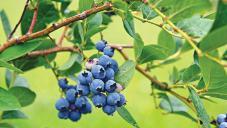
FloridaBlueberryGrowers.org The Blueberry News | 27
NELSON KIRKLAND, Publisher
Turning Point
NOBODY EVER SAID FARMING IS EASY. There will always be anticipated trials and victories, and there will even be unexpected challenges. So it’s a good thing Florida blueberry growers are so resilient in the face of adversity. No other time has made that more evident than the past two years. Blindsided by a pandemic that left many with no way to unload their crops only to see their hard work get lost in the tsunami of cheap foreign exports, particularly from Mexico, growers faced a crucial deciding point. Some smaller farms, unable to compete with the influx, were forced to shutter operations. Still, last year marked a turning point of sorts because as it turns out, the 2021 season was pretty decent for most Florida growers. Here’s why.
Stability and Technology
While prices were down for most of the 2020 season, growers reported much more consistent prices in 2021. A substantial freeze hindered Mexican growers during Florida’s prime window, eliminating some of that foreign competition and helping to stabilize the market. That new stability of the market and price offered the break many of our growers needed to get back on their feet, something they haven’t been able to do in quite some time. The end result was a profitable season that enabled growers to look to the future instead of remaining in survival mode.
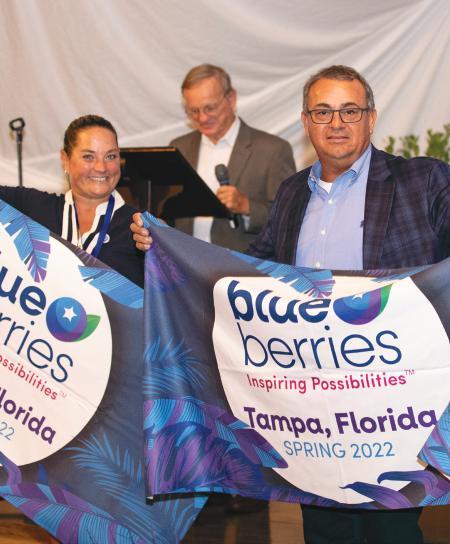

Heading into 2022, larger producers are hopeful as the technological advances of mechanical harvesting may finally give them a weapon to fight Mexico’s edge of cheap labor. Perhaps just as promising is the fact that many growers in the state are planting new bushes.
Will imports still present a formidable challenge? Definitely. Thankfully, the Florida Blueberry Growers Association Board of Directors and Brittany Lee are hard at work with the USHBC and NABC to craft a plan to strengthen the industry. You can read more about their work in Lee’s letter (page 4) and the USHBC update (page 36).
It’s all part of that resilience I mentioned. Just like strong roots help a plant to prosper, strong people help the industry survive and thrive. These are our people.
SAVE THE DATE!
USHBC & NABC Spring Meeting
March 1-4, 2022
Tampa
• Education
• Blueberry promotion news
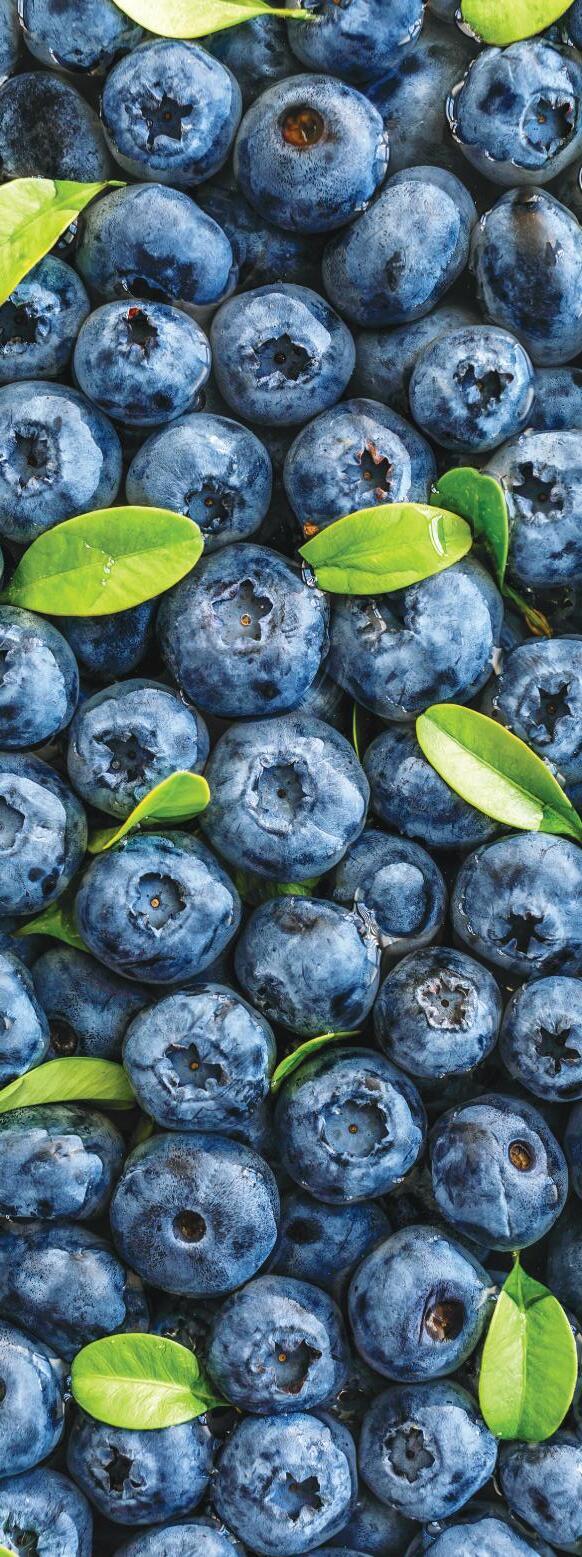
• Grower tours
• Even an optional fishing tournament! Come learn, network, connect, and collaborate on moving the blueberry industry into the future.
Register at blueberryevents.org/spring22.

28 | The Blueberry News
interlude publisher, s
MEMBERSHIP INFORMATION
To join or renew your membership in the Florida Blueberry Growers Association, mail a check payable to: FLORIDA BLUEBERRY GROWERS ASSOCIATION, INC. P.O. Box 358086 Gainesville, FL 32635

•Grower Member: $150 (Florida & out-of-state growers)
Additional Associate Member/Grower: $50 each
•Allied Member: $200 (equipment and chemical companies, etc.)














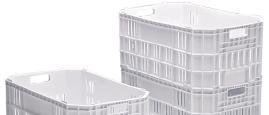


Additional Associate Member/Allied: $50 each
•Educational & Research Member: $10 (University and USDA members who do not grow blueberries commercially)



Plastic Rentals, Logistic & Management Solutions ■ Daily Bin Rental On-Demand — No Minimum Quantity or Timeframe ■ Citrus Bins, Blueberry Lugs, Peach Tote Rentals ■ Bin Repairs ■ Recycle Program Jerry Cummings 863-651-5596 jcummings@palogix.com www.palogix.com CONNECT WITH US • Content Marketing • Niche Publishing • Social Media Management • Content-Focused Website Development • Targeted Marketing • Articles, Whitepapers, E-Books, Reference Guides, Workbooks, and more. centralfloridamediagroup.com (863) 248-7537 info@centralfloridamediagroup.com
“We are an agricultural services advertising company that helps your business attract clients.”
– Nelson Kirkland, founder, Central Florida Media Group
Water Matters Basics of Irrigation Management for Florida Growers
Irrigation is an important cultural practice as blueberry plants emerge from winter, initiate growth, and move through the various stages of flowering, fruit set, fruit development, and postharvest summer growth. Irrigation requirements change throughout the year based on crop development and weather. Water movement through the soil, plant, and atmosphere is governed by water potential. Water moves from high to low water potential. Generally, water potential is highest in the soil and lowest in the atmosphere, facilitating the movement of water from the soil through the plant to the atmosphere. If the soil becomes too dry, its water potential is low, and this can interfere with water uptake by plants.
As a crop, blueberries are particularly susceptible to drought stress due to the shallow root systems and the absence of root hairs (Figure 1). Moreover, they are often grown in sandy soils that are highly amended with pine bark or directly in pine bark beds. The water-holding capacities of sands amended with bark or pine bark beds can vary considerably depending on the amount of bark used and its level of decomposition. However, in general, pine bark and Florida’s sandy soils do not retain water very well. Therefore, modifications to standard irrigation practices may be necessary to keep the blueberry root zones sufficiently moist to meet plant water demands.
In general, frequent, light applications of water are beneficial for maintaining
adequate soil moisture in the blueberry root zone without applying excessive water that will move below the root zone, contribute to leaching of fertilizers and pesticides, and be unavailable for plant uptake.
Blueberry water requirements are highly variable depending on crop development, weather, and canopy size. A mature blueberry planting may require roughly 40 inches of water (irrigation and rainfall combined) annually, depending on plant spacing and canopy coverage of the field. During periods of fruit development or high canopy growth, water in excess of 1 inch per week may be required. For example, in a study in North-Central Florida, mature “Emerald” plants used an average of

30 | The Blueberry News FloridaBlueberryGrowers.org
for the crop
Figure 1. Excavated southern highbush blueberry plant grown in a pine bark bed. The shallow, fibrous root system was primarily limited to the depth of the pine bark, with very few roots penetrating the underlying soil. Credits: JEFF WILLIAMSON
about 2 gallons of water per day during the peak periods of water use in May and again from July through September. Two gallons applied evenly to a bed area of 3 by 4 feet would be approximately 0.27 inches of water applied to that area. During periods of high water demand, shorter duration irrigation events applied multiple times per day will increase water use efficiency and reduce potential leaching of fertilizers and pesticides compared to longer, less frequent, irrigation events. The frequency of irrigation events will also depend on weather conditions, cultivar, production system, and the use and condition of pine bark as a substrate or amendment. The goal should be to keep the root zone moist without applying water below the root zone. Knowledge of crop water demand, average rooting depth, and the water-holding characteristics of soil will help achieve this goal.
Knowing when to apply irrigation is critical to meeting plant water needs in advance of drought stress. Drought stress can impair vegetative and reproductive growth and make plants more susceptible to diseases such as stem blight. Soilmoisture sensors can supply data on water
content at different depths, providing growers with the information needed for proper irrigation scheduling. This information can potentially reduce water use while maintaining or enhancing plant growth and fruit quality. The goal is to keep soil moisture within a targeted range by replacing water lost through evapotranspiration. Common groups of moisture sensor types include those that measure soil water content (volumetric), and those that measure soil water tension (the force of adhesion of water to soil particles) Sensors measuring soil water content can indicate both when and how much to irrigate. See UF EDIS Publication BUL343, Field Devices for Monitoring Soil Water Content (https:// edis.ifas.ufl.edu/ pdffiles/AE/AE26600. pdf) for more details.
Sensors that measure water tension may not work well in most Florida blueberry fields because of the high sand and bark content of the soil. Sensors should be placed in accessible areas away from field edges in areas that are representative of the field in which they

will be measuring moisture. Sensor depth should be within the root zone. Sensors placed at different depths will provide more information. Sensors placed close to the soil/bark surface will signal when to irrigate, and sensors at a lower depth (toward the bottom of the root zone) will indicate how far the water has penetrated, indicating how much to irrigate. If only one sensor per site is used, it should be placed at a depth in the middle of the root zone. In fields with significant variability (e.g., slope, wetness, cultivar type, plant age, etc.) multiple sensor sites should be established.
Consideration of the nature of the blueberry root system, the use of pine bark beds, varying blueberry water needs throughout the year, and available tools for monitoring root zone moisture will help growers establish and maintain efficient irrigation practices, and avoid excess water use and leaching of nutrients below the root zone.

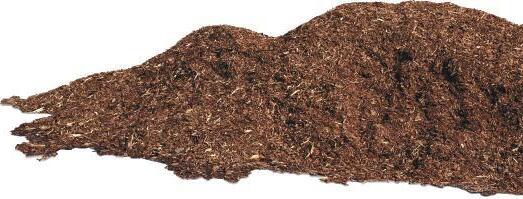 CREDIT by JEFF WILLIAMSON, Horticultural Sciences Department, UF & DOUG PHILLIPS, UF/IFAS Blueberry Extension Coordinator
CREDIT by JEFF WILLIAMSON, Horticultural Sciences Department, UF & DOUG PHILLIPS, UF/IFAS Blueberry Extension Coordinator
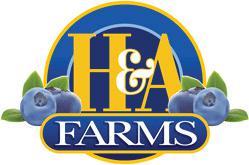
FloridaBlueberryGrowers.org The Blueberry News | 31
Pine Bark For Sale Blueberry Growers Only Call Diego X. Vargas at 407-625-6436 or email diego.vargas@handafarms.com Contact Jack Green, Blue Labor, LLC. jackgreen4@icloud.com 863-397-9471 • Mulch sales • Container sales • Farm consulting
Recipe Corner
molasses until smooth.
Beat in flour mixture on low speed just until mixed; mix in dried blueberries. Divide dough in half and wrap each piece in plastic wrap; refrigerate for at least 1 hour or overnight.
Preheat oven to 350°F. On a lightly floured work surface, roll out the dough, one portion at a time, to 1/4-inch thickness.
Using floured 3-inch cookie cutters, cut out cookies, rerolling scraps to make 20 cookies. Using a spatula, transfer to parchment paper-lined baking sheets, about 1 inch apart.
Bake in batches, rotating pans halfway through, for 10 to 12 minutes or until cookies are firm and lightly golden around edges. Let cool slightly on a baking sheet; transfer to rack and let cool completely.
Blueberry Frosting
Chewy GingerbreadBlueberryCookies
These soft, chewy Blueberry
Gingerbread cookies are fun to make, fun to decorate and the most fun to eat. The cookies themselves are packed with zesty flavor from ingredients like dried blueberries, ginger, cinnamon, and cloves, and the icing adds a sweet, extra-festive boost of blue.
Prep Time: 30 minutes
(+ 1 hour chilling time)
Cook Time: 30 minutes
Portions: 20
Ingredients
• 3 cups all-purpose flour
• 2 teaspoons ground ginger
• 1⁄2 cup unsweetened dried blueberries
• 1 teaspoon ground cinnamon
• 1 teaspoon baking soda
• 1⁄2 teaspoon salt
• 1⁄4 teaspoon ground cloves
• 1⁄2 cup unsalted butter, at room temperature
• 1⁄2 cup brown sugar
• 1 egg
• 1⁄2 cup molasses
Blueberry Frosting
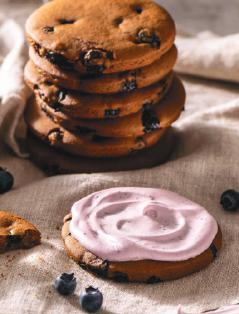
• 2 pasteurized egg whites
• 1⁄4 teaspoon cream of tartar
• 1⁄4 teaspoon salt
• 2 3⁄4 cups sifted powdered sugar
• 1⁄4 cup puréed fresh blueberries
• 1 teaspoon vanilla extract
• 1⁄4 cup unsweetened dried blueberries
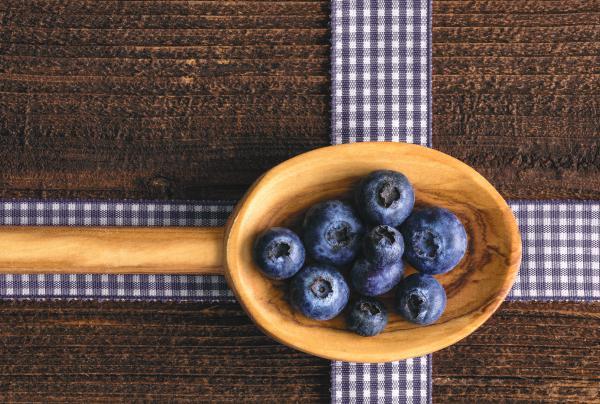
Whisk together flour, ginger, cinnamon, baking soda, salt, and cloves; set aside. Using an electric mixer, beat butter and brown sugar until light and fluffy; beat in the egg. Beat in
Using an electric mixer on low speed, beat egg whites, cream of tartar, and salt until light and foamy. Increase speed to high; beat until soft peaks start to form.
Reduce speed to low; gradually beat in icing sugar.
Increase speed to high; beat in puréed fresh blueberries and vanilla until smooth and spreadable (thicken with more icing sugar or thin with water if needed). Cover with plastic wrap until ready to use. Spread or pipe icing onto cookies; decorate with dried blueberries.
No-Bake Blueberry Coconut Energy Balls
If you’ve got 5 minutes and a food processor, you can whip up No-Bake Blueberry Coconut Energy Balls as a make-ahead treat for the week! Perfect for snacking on the go, the bite-sized energy balls are loaded with blueberry flavor. Roll them in chopped nuts for extra crunch, or dip in melted chocolate for a sweeter finish.

Ingredients
• 1 cup frozen blueberries, thawed and rinsed
• 1⁄2 cup coconut flour
• 1⁄4 cup maple syrup
• 1⁄4 cup melted coconut oil
• 1⁄2 cup unsweetened shredded coconut
Instructions
1. In a food processor, combine blueberries, coconut flour, maple syrup, and coconut oil until blended.
2. Shape into 1-inch balls; roll in shredded coconut.
3. Store in an airtight container in the refrigerator for up to 3 days.
Variations
Alternatively, roll in chopped nuts or dip in melted chocolate.
continued on page 35
32 | The Blueberry News FloridaBlueberryGrowers.org
COURTESY OF USHBC, blueberry.org
MY PAYROLL SOLUTIONS LLC has over 18 years of experience in matching small businesses, Agriculture Companies and harvesters to staffing services and employee leasing companies which provide payroll services with workers comp coverage for our clients and providing assistance with H2A applications. For more information contact Jeff H Futch at 863 835-1130

EQUIPMENT FOR RENT
FOR RENT
7 yard rowmulcher, Great for replenishing bark on Blueberry Farms, PTO drive, 30hp tractor needed. Call 863-604-2526 for rental details.

PRODUCTS & SERVICES
AGRI-SOURCE
Producer of Blueberry Pine Bark Products for the Blueberry Industry. 352-351-2700
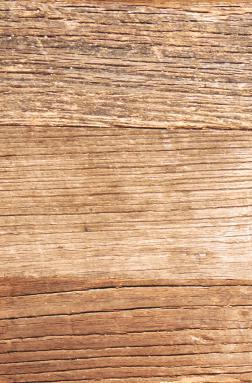
AGRISTARTS
Producers of tissue culture 72ct liners and 21ct field-ready plants. Licensed for all UF selections + more! 407-889-8055
AIRTEC SPRAYERS
Over the Row Blueberry Sprayers
Lower Volumes, Less Drift, Better Coverage. 863-412-6247 AirtecSprayers.com
BIGGER BERRIES LLC
Suppliers for Alzchem and Dormex. Call Ryan Atwood at 1-352-267-3229 or John Strickland at 1-912-520-0220 To learn more visit www.FruitFormity.com
BIOBEST
Biobest bumblebees maximize pollination for a better fruit set. 1-855-224-6237
CARDEN & ASSOCIATES, INC.
863-291-3505
Here for the Florida Blueberry Grower…yesterday, today and tomorrow!

DUNDEE GROWERS ASSOCIATION
Harvesting, Packing & Marketing services since 1924. (863) 439-1574 / Dun-D.com
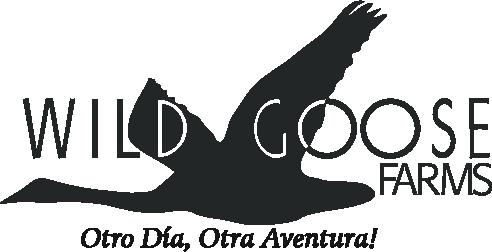
EVERGLADES EQUIPMENT
12 locations in Florida with the Best Lease Program in the Business! A John Deere Dealer ShopEFE.com
FARM CREDIT OF CENTRAL FL 866-824-5626 Patronage refunds for Smart Farmers and Country Home Owners. Lower costs!
PALOGIX INTERNATIONAL
Plastic rentals, logistic & management solutions. Palogix.com

PERFORMANCE NUTRITION
Empower your soil with soil innoculants and protect against stress (732) 888-8000 • pnfertilizers.com
PINE BARK FOR SALE
Blueberry Growers Only, H&A Farms, Call Diego Vargas at 407-625-6436 or email Diego. Vargas@HandAFarms.com

PLANT FOOD SYSTEMS
Advanced Plant Nutrition and Protection. PlantFoodSystems.com
FARMING INNOVATION LLC Hedging and Topping of Blueberries, Peaches, and Olives. HunterVickers 863-287-2351 vickershunter@yahoo.com
FIELDS EQUIPMENT CO., a John Deere Authorized Dealer. 3 Locations. Small Dimensions, Big Performance. (863) 967-0602 / FieldsEquip.com
FLORIDA FOUNDATION SEED PRODUCERS, INC.
352-392-9446
Providing Superior Plant Varieties
ISLAND GROVE
352-274-3835
Quality Plants. Superior Service. IslandGroveAgProducts.com
ORCHARD-RITE
performance wind machines are pure and powerful (509) 834-2029 / Orchard-Rite.com
Southern High Bush Plants For Sale. Avanti, Optimus, Colossus, Arcadia, and Sentinel. Liners, Quarts, and Gallons. Quantity Discounts Available and PreOrder Discounts.
For Orders & More Information, Contact Cameron at (407) 401-4434 or email to cameron@ wildgoosefarms.net
FloridaBlueberryGrowers.org The Blueberry News | 33
To place a classified ad please e-mail info@centralfloridamediagroup.com or call (863) 248-7537.
BUILD YOUR OWN CLASSIFIED info @centralfloridamediagroup.com
Another monitoring method is to cut several stems with floral buds and place them in a zip-close bag at room temperature for a few days. If present, mature orange-colored larvae (Figure 3) will appear on the sides of the bag.
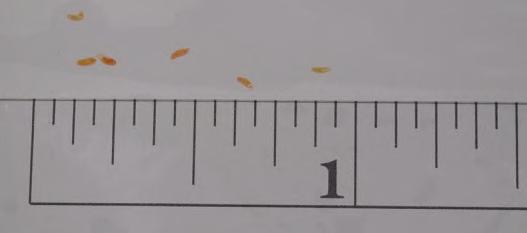
Many growers use preventative sprays for control of BGM, especially on farms with a history of this pest. The first application should be made right before floral bud break, with a second application made 10 days later. One potential management program is to use Apta® (Tolfenpyrad) or Exirel® (Cyantraniliprole) as a preventative spray in November when there is little activity in the field. A second application with Movento® (Spirotetramat) + Induce® (a non-ionic wetter/spreader surfactant) should be made when there is more midge pressure in the field in December or early January (if leaves are still on the blueberry bush). When floral bud scales begin to open, Delegate® (Spinetoram)


can be used if the pesticide is allowed to dry for three hours before pollinators can forage. In cases where only leaf buds are present in the field, a second application with Movento® + Induce® may be warranted.
of the season
continued from page 26
TABLE 2. INSECT AND MITE PEST MANAGEMENT OPTIONS, CONT.
34 | The Blueberry News FloridaBlueberryGrowers.org topic
Disease/Pest Problem Management Options Amount of Formulation per Acre Effectiveness (Least = + to most = +++++) REI (restricted entry interval) PHI (postharvest interval) Comments Spotted wing drosophila Cyantraniliprole (Exirel®) 13.5–20.5 oz +++ 12 h 3 days Minimum application interval between treatments is 5 days. Fenpropathrin (Danitol® 2.4 EC) 10.6–16 oz ++++ 24 h 3 days Do not make more than two consecutive applications. Rotate with insecticides from different classes. Bifenthrin (Brigade® 2 EC) 5.3–16 oz ++++ 12 h 1 day Do not make more than two consecutive applications. Phosmet (Imidan® 70W) 1.3 lb ++++ 1 day 3 days Spinosad (Entrust®) (labeled for organic use) 1.25–2 oz +++ 4 h 3 days Label for organic use. Allow pesticide to dry before bees can forage. Acetamiprid (Assail® 30 SG) 4.5–5.3 oz +++ 12 h 1 day Do not apply when a lot of bees are foraging. Tolfenpyrad (Apta®) 27 fl oz/acre ++ 12 h 3 days Allow 14 days between applications.
bug
of the month , cont. from page 10
Figure 3. Mature BGM larvae. Credits: O. Liburd, UF/IFAS
CREDIT by DR. OSCAR LIBURD, Professor and Program leader, Fruit and Vegetable Entomology, University of Florida & DOUG PHILLIPS, Blueberry Extension Coordinator, University of Florida
Blueberry Peach Bourbon Cobbler
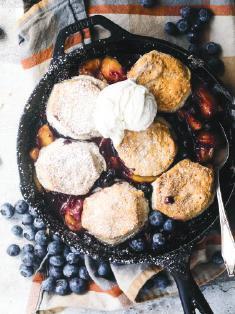
Nothing says cozy quite like a big heaping scoop of this Blueberry Peach Bourbon Cobbler. Blueberries and fresh peaches are combined with brown sugar and bourbon, giving you warm fall flavor in every bite. Take it one step further and top with a scoop of vanilla ice cream before serving to your bunch – trust us, they won’t be disappointed. Made in partnership with Foodness Gracious.
Cobbler Ingredients
• 2 pounds fresh or frozen peaches, cut into thick wedges
• 1 ounce fresh or frozen blueberries
• 1⁄4 cup brown sugar
• 1⁄4 cup granulated sugar
• 1 1⁄2 tablespoons cornstarch
• 4 tablespoons bourbon
• 2 teaspoons vanilla extract
Biscuit Topping Ingredients
• 1 1⁄2 cups all purpose flour
• 2 tablespoons granulated sugar (plus 1 tbsp for sprinkling)
• 2 1⁄2 teaspoons baking powder
• 6 tablespoons cold unsalted butter, cut into small pieces
• 1⁄2 cup whole milk (plus 1 tsp for glazing biscuits)
Cobbler Instructions
1. Preheat oven to 400˚F.
2. In a bowl, toss and combine peaches, blueberries, sugars, cornstarch, bourbon and vanilla.
3. Pour the mixture into a 9-inch cast iron or heavy metal pan.
Biscuit Topping Instructions
1. In a medium bowl, add the flour, sugar, baking powder, butter. Crumble together until the butter is like sand.
2. Mix in the milk until the dough comes together and forms a ball.
3. Place the dough onto a floured work surface and pat into a circle, about 1-inch thick.
4. Using a 3-inch round cutter, cut out 6 pieces of the biscuit dough and set them on top of the fruit mixture.
5. Using a pastry brush, glaze the biscuits with the remaining milk and sprinkle liberally with remaining sugar.
6. Place the cobbler into the oven and bake for 30-35 minutes until biscuits are golden brown and cooked through underneath.
Simple Blueberry Grilled Cheese
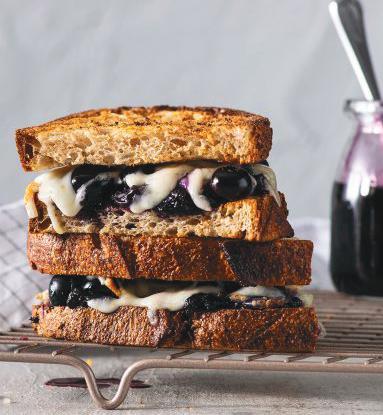
The gold standard of comfort foods gets a boost of blue in the Blueberry Grilled Cheese. Blueberry jam and fresh blueberries team up for a double dose of sweet-tart flavor, paired with shredded mozzarella for a melty, yummy treat. For a little extra oomph, try Monterey Jack or aged Cheddar. Just a simple meal with a sophisticated twist you’ll want to make over and over again!
Homemade Blueberry Jam Ingredients
• 6 1⁄2 cups fresh blueberries, coarsely chopped (about 5 pints)
• 1 package granulated fruit pectin for lower-sugar recipes
• 4 1⁄2 cups granulated sugar, divided
Simple Blueberry Grilled Cheese Ingredients
• 1⁄4 cup Homemade Blueberry Jam
• 8 slices sourdough bread
• 1 cup fresh blueberries
• 1 cup shredded mozzarella cheese
• 1⁄4 teaspoon salt
• 1⁄4 teaspoon pepper
• 2 tablespoons butter, at room temperature
Homemade Blueberry Jam Instructions
1. In a large saucepan, combine blueberries and 1/2 cup water. In a small bowl, stir together pectin and 1/4 cup of the sugar; stir into blueberry mixture. Bring to a rolling boil over high heat, stirring constantly.
2. Add remaining sugar all at once; return to a rolling boil. Boil for exactly 1 minute, stirring constantly. Remove from heat; skim off any foam. Let stand for about 30 minutes or until cool enough to handle.
Simple Blueberry Grilled Cheese Instructions
1. Spread 1 tablespoon jam over each of 4 slices of bread; top with fresh blueberries and sprinkle with mozzarella. Cap with remaining bread. Butter outside slices of bread.
2. Heat a large skillet over medium heat; cook sandwiches in batches for 2 to 3 minutes per side or until bread is toasted and cheese melts.
Recipe Tip
Remaining jam can be covered and refrigerated for up to 1 week.
FloridaBlueberryGrowers.org The Blueberry News | 35 recipe
cont.
32
corner,
from page
Seizing a Key Opportunity for Blueberry Promotion
With health and nutrition being key benefits of blueberries, National Nutrition Month® in March is a natural fit for the U.S. Highbush Blueberry Council (USHBC) to rally around and leverage as its first “power period” of 2022.
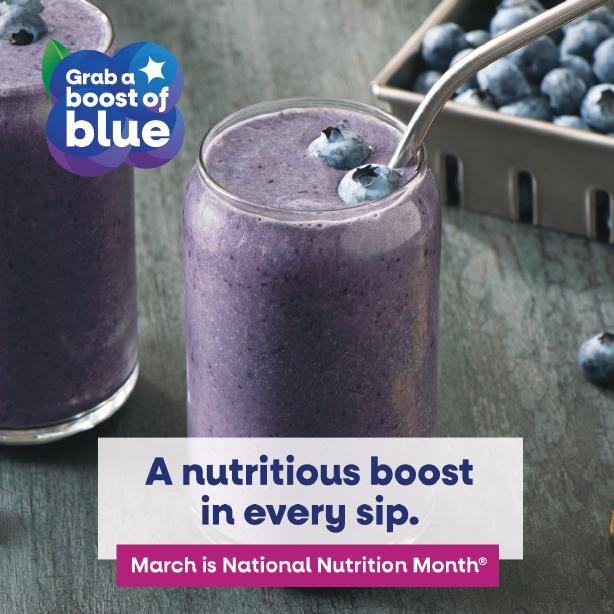
National Nutrition Month® is an annual nutrition education campaign created and developed by the Academy of Nutrition and Dietetics. The campaign is grounded in making informed food choices, such as filling half of our plates with fruits and vegetables and establishing healthy eating and physical activity practices that have a positive impact on overall well-being. This year’s theme, Celebrate a World of Flavors, embraces global cultures, cuisines, and inclusivity.
USHBC’s March activations will use National Nutrition Month® as a hook to encourage creating fearlessly nourishing meals and snacks that fit into individual lifestyles, honor global cuisines and traditions, and cater to varying taste preferences. Additionally, since March is also National Frozen Food Month, both fresh and frozen blueberries will be highlighted as a smart way to amplify both the flavor and nutrition of popular meals and snacks, and provide an added benefit to a variety of eating patterns, life stages, and disease states.
“This key power period plays an
important role in USHBC’s strategy to promote blueberries – not just as healthy, but as a way to impact overall wellness, no matter what that looks like for different people,” says Jennifer Sparks, USHBC vice president of marketing and communications. “We want to encourage consumers to grab a boost of blue throughout their day.”
USHBC’s robust National Nutrition Month promotion plan to increase awareness and consumption includes:
• Outreach to top-tier consumerfocused media outlets and direct communications to consumer e-newsletter subscribers;
• Outreach to registered dieticians and nutrition professionals nationwide, via key health publications and USHBC health professionals e-newsletter;
• Media segments, social media, and blog content achieved through USHBC’s Blue Crew ambassadors and media registered dieticians to garner third-party expert activation of the message;
• Distribution of custom-tailored fact sheets and recipes for consumers and health professionals; and
• Ongoing social media content, including nutrition and wellness tips, advice, recipes, and eyecatching imagery, will run throughout the month.
The industry can follow along and see some of the activations in real time by following USHBC’s social media accounts @blueberries on Instagram, Facebook, Twitter, and Tiktok. This content will be highly engaging and can be shared on your own channels to educate and inspire your audiences.
“A key initiative of USHBC’s 2022 promotion plan is to ensure that industry stakeholders can capitalize on our nationwide efforts for their own benefit as well as for the industry as a whole,” says Sparks.
To ensure the industry has tools and advice to plan in advance and take advantage of this opportunity to tie in National Nutrition Month, in early January USHBC released the National Nutrition Month Toolkit, available at ushbc.org/NutritionMonth. The toolkit includes:
• Social media content such as readyto-use graphics and suggested captions for easy posting;
• Digital ads and banners to use on your website, in newsletter content, or in digital marketing materials;
• Delectable recipes, featuring both fresh and frozen blueberries as the showstopper ingredient, to awaken the inner chef and inspire experimentation with fresh flavors;
• Blueberry imagery to add to your own library, share on social media,
36 | The Blueberry News FloridaBlueberryGrowers.org
USHBC update
include in your digital newsletter, add to printed collateral, or upload to your website;
• QR codes to add to your packaging or share in digital promotions to automatically take consumers to ideas to Grab A Boost of Blue, recipe inspiration, health benefits, and more, right at point-of-sale; and

• Downloadable tip sheets to share the health research and benefits of blueberries with consumers and health professionals.
“Collectively, we can do great things,” adds Sparks.
Did You Know? Updated Florida Blueberry IPM Guide Released
The University of Florida has released the 2022 Florida Blueberry Integrated Pest Management Guide, updated and revised from the previous version released in 2019. It has been reformatted with diseases and pests listed by stage of plant development at the beginning, followed by tables for suggested chemical controls for each listed disease and insect/mite pest. Suggested controls for certain items not previously addressed have been added. Also included are sections on weed control and hydrogen cyanamide. This publication is available at https://edis. ifas.ufl.edu/publication/ hs380.


FloridaBlueberryGrowers.org The Blueberry News | 37
Once we’ve lowered some of the inflation pressure on our costs…
How do we find relief from the downward pressure on the price of our blueberries? Will there finally be a fair price for our fresher and higher-quality local blueberries? Will consumers see the value of our American-grown fruit and pay enough to sustain our American blueberry farms? Or will the tidal wave of cheaper, weeks-old imports wash our industry away?
I, for one, believe we can make our case with our customers that Floridagrown blueberries are a great value and well-deserving of a premium price. Such a complex challenge will take a more strategic effort than in

past years when global competition was not the predominant threat. Each of us growers needs to get involved in convincing the marketing and distribution chain that our fruit is worthy. Decisions by marketers, grocers, and consumers will decide our future.
So what can you as a grower do to help move the needle our way? Start by getting involved with and supporting the Florida Blueberry Growers Association. Your Board of Directors is wrestling with these issues at every meeting. Get up to speed with the efforts of the USHBC and its new energy to make blueberries one of the fastest-growing produce categories. Work with your
marketers and grocers to build a two-way, win-win relationship that transcends just a two-month harvest sadly forgotten until the next season rolls around.
Let’s not become a blueberry pancake in 2022. We can figure out how to lower our costs. We can convince our customers that our blueberries and our American farms are worth their strong support. If we keep our customers happy and join with them to create a farm-totable ecosystem, we can keep our businesses healthy for years to come.
Blueprint for an Amazing Agriculture Website
38 | The Blueberry News FloridaBlueberryGrowers.org
president’s letter, cont. from page 6
Have a User-Friendly, Mobile Reponsive Website Make Sure Your Services, Location & Contact Info are Easy to Find Your Site Should Load in 3 Seconds or Less Make Your “Contact Us” Option Clearly Visible on Your Website
Florida Foundation Seed Producers, Inc.
Florida Foundation Seed Producers, Inc.
Florida
Foundation Seed Producers, Inc. http://ffsp.net
Blueberry varieties developed by the University of Florida are patent protected under U.S. Code Title 35. Anyone propagating plants for their own use or for sale is required to be licensed by Florida Foundation Seed Producers, Inc. (FFSP). Additionally, packers, marketers, and sellers of fruit from the above varieties can be liable for selling fruit from illegally propagated plants. As of December 31, 2021 the above entities are the only entities licensed for legal propagation and sale of plants of the respective varieties. Protect yourself from
Blueberry varieties developed by the University of Florida are patent protected under U.S. Code Title 35. Anyone propagating plants for their own use or for sale is required to be licensed by Florida Foundation Seed Producers, Inc. (FFSP). Additionally, packers, marketers, and sellers of fruit from the above varieties can be liable for selling fruit from illegally propagated plants. As of March 30, 2021 the above entities are the only entities licensed for legal propagation and sale of plants of the respective varieties. Protect yourself from
Blueberry varieties developed by the University of Florida are patent protected under U.S. Code Title 35. Anyone propagating plants for their own use or for sale is required to be licensed by Florida Foundation Seed Producers, Inc. (FFSP). Additionally, packers, marketers, and sellers of fruit from the above varieties can be liable for selling fruit from illegally propagated plants. As of March 30, 2021 the above entities are the only entities licensed for legal propagation and sale of plants of the respective varieties. Protect yourself from
http://ffsp.net Ask
unknowingly purchasing illegal plants or fruit by asking entities if they are licensed to propagate and if fruit has come from legal plants. Illegal propagation is a direct threat to the blueberry industry and the patent rights held by FFSP. Royalties generated are critical to the support of the Florida blueberry breeding program. If you are interested in obtaining a license or would like to anonymously report illegal propagation, please contact: FFSP, PO Box 110200, Gainesville, FL 32611, Phone: 352273-3656.
unknowingly purchasing illegal plants or fruit by asking entities if they are licensed to propagate and if fruit has come from legal plants. Illegal propagation is a direct threat to the blueberry industry and the patent rights held by FFSP. Royalties generated are critical to the support of the Florida blueberry breeding program. If you are interested in obtaining a license or would like to anonymously report illegal propagation, please contact: FFSP, PO Box 110200, Gainesville, FL 32611, Phone: 352273-3656.
unknowingly purchasing illegal plants or fruit by asking entities if they are licensed to propagate and if fruit has come from legal plants. Illegal propagation is a direct threat to the blueberry industry and the patent rights held by FFSP. Royalties generated are critical to the support of the Florida blueberry breeding program. If you are interested in obtaining a license or would like to anonymously report illegal propagation, please contact: FFSP, PO Box 110200, Gainesville, FL 32611, Phone: 352273-3656.
FloridaBlueberryGrowers.org The Blueberry News | 39
the Question!
Are You Licensed?” Licensee Abundance (PP16476) Arcadia ™ FL 07399 ' ( PP 26313 ) Avanti ™ ' FL 06203 ( PP 26312 ) Bobolink ™ ' FL 03291 ' ( PP 21377 ) Chickadee ™ ' FL 04235 ' ( PP 21376 ) Colossus (PPAF) Endura ™ ' FL 06377 ( PP 26679 ) Farthing (PP19341) FL09-216 (PPAF) FL11-137 (PPAF) Flicker ™ ' FL 9643 ' ( PP 21554 ) Indigocrisp ™ ' FL 98325 ' ( PP 26523 ) Keecrisp ™ ' FL 06556 ' ( PP 27771 ) Kestrel ™ ' FL 0240 ' ( PP 21719 ) Magnus (PP32181) Meadowlark ™ ' FL 01173 ' ( PP 21553 ) Millennia (PP12816) Optimus (PP32028) Patrecia (PP27740) Primadonna (PP20181) Raven ™ ' FL 05627 ' ( PP 21374 ) Savory (PP15109) Scintilla (PP19233) Sentinel (PPAF) Snowchaser (PP19503) Southern Belle (PP13931) Springhigh (PP16404) Springwide (PP16333) Sweetcrisp (PP20027) Vireo ™ FL 05107 ' ( PP 21375 ) Wayne (PP32182) Windsor (PP12783) Agri-Starts, Inc. xxxxxx xxxxxxxxx x Blue Star Nursery x¹ x¹ Clear Springs Farming, LLC x¹ x¹ x¹ Cornelius Farms, LLC x¹ xx¹ xxxxxxx x xxx Dole Diversified North America, Inc. x xxx¹ x xx x x¹ Island Grove, LLC xxxxxxx xxxxxxxxxxxxxxxxxxxx Lochloosa Lake Farms, LLC x¹x¹x¹x¹x¹ x¹x¹x¹x¹x¹ x¹x¹ x¹ x¹x¹ Oregon Blueberry Farms & Nursery xx x xxx Plant Development Services, Inc. xx Southland Berry Plantation x¹ x¹x¹ x¹x¹x¹ x¹ The DOC Applications, Inc. xx Towers Family Farms LLC x¹ x¹ Wayne's Homestead x¹ x¹x¹ Wild Goose Farms, LLC xxx x Yancey Blueberry, LLC x¹x¹x¹x¹x¹x¹ x¹x¹ x¹ x¹ x¹ x¹ = Licensed for USA (excluding AZ, CA, OR, and WA) x = Licensed for USA x¹
“
Ask the Question! “Are You Licensed?” Licensee Abundance (PP16476) Arcadia ™ ' FL 07399 ' ( PP 26313 ) Avanti ™ FL 06203 ' ( PP 26312 ) Bobolink ™ ' FL 03291 ( PP 21377 ) Chickadee ™ ' FL 04235 ( PP 21376 ) Colossus (PPAF) Endura ™ FL 06377 ' ( PP 26679 ) Farthing (PP19341) FL09-216 (PPAF) FL11-137 (PPAF) Flicker ™ ' FL 9643 ' ( PP 21554 ) Indigocrisp ™ ' FL 98325 ' ( PP 26523 ) Keecrisp ™ ' FL 06556 ( PP 27771 ) Kestrel ™ ' FL 0240 ' ( PP 21719 ) Magnus (PP32181) Meadowlark ™ ' FL 01173 ' ( PP 21553 ) Millennia (PP12816) Optimus (PP32028) Patrecia (PP27740) Primadonna (PP20181) Raven ™ ' FL 05627 ( PP 21374 ) Savory (PP15109) Scintilla (PP19233) Sentinel (PPAF) Snowchaser (PP19503) Southern Belle (PP13931) Springhigh (PP16404) Springwide (PP16333) Sweetcrisp (PP20027) Vireo ™ ' FL 05107 ' ( PP 21375 ) Wayne (PP32182) Windsor (PP12783) Agri-Starts, Inc. xxxxxx xxxxxxxxx x Blue Star Nursery x¹ x¹ Clear Springs Farming, LLC x¹ x¹ x¹ Cornelius Farms, LLC x¹ xx¹ xxxxxxx x xxx Dole Diversified North America, Inc. x xxx¹ x xx x x¹ Island Grove, LLC xxxxxxx xxxxxxxxxxxxxxxxxxxx Lochloosa Lake Farms, LLC x¹x¹x¹x¹x¹ x¹x¹x¹x¹x¹ x¹x¹ x¹ x¹x¹ Oregon Blueberry Farms & Nursery xx x xxx Plant Development Services, Inc. xx Southland Berry Plantation x¹ x¹x¹ x¹x¹x¹ x¹ The DOC Applications, Inc. xx Towers Family Farms LLC x¹ x¹ Wayne's Homestead x¹ x¹x¹ Wild Goose Farms, LLC xxx x Yancey Blueberry, LLC x¹x¹x¹x¹x¹x¹ x¹x¹ x¹ x¹ x¹ x¹ = Licensed for USA (excluding AZ, CA, OR, and WA) x = Licensed for USA x¹
http://ffsp.net Ask the Question! “Are You Licensed?” Licensee Abundance (PP16476) Arcadia™ 'FL07-399' (PP26313) Avanti™ 'FL06-203' (PP26312) Bobolink™ 'FL03-291' (PP21377) Chickadee™ 'FL04-235' (PP21376) Colossus (PP33802) Endura™ 'FL06-377' (PP26679) Farthing (PP19341) FL09-216 (PPAF) FL11-137 (PPAF) Flicker™ 'FL96-43' (PP21554) Indigocrisp™ 'FL98-325' (PP26523) Keecrisp™ 'FL06-556' (PP27771) Kestrel™ 'FL02-40' (PP21719) Magnus (PP32181) Meadowlark™ 'FL01-173' (PP21553) Millennia (PP12816) Optimus (PP32028) Patrecia (PP27740) Primadonna (PP20181) Raven™ 'FL05-627' (PP21374) Savory (PP15109) Scintilla (PP19233) Sentinel (PPAF) Snowchaser (PP19503) Southern Belle (PP13931) Springhigh (PP16404) Springwide (PP16333) Sweetcrisp (PP20027) Vireo™ 'FL05-107' (PP21375) Wayne (PP32182) Windsor (PP12783) Agri-Starts, Inc. x x x x x x x x x x x x x x x x Agromillora Florida, Inc. x x x Alma Pak, Inc. x¹ x¹ x¹ x¹ Blue Star Nursery x¹ x¹ Clear Springs Farming, LLC x¹ x¹ x¹ Cornelius Farms, LLC x¹ x x¹ x x x x x x x x x x x Dole Diversified North America, Inc. x x x x¹ x x x x x¹ Ferguson Farms, LLC x x x x x x x x x x x Island Grove, LLC x x x x x x x x x x x x x x x x x x x x x x x x x x x Oregon Blueberry Farms & Nursery x x x x x x Plant Development Services, Inc. x x Southern Propagation Partners, LLC x x Southland Berry Plantation x¹ x¹ x¹ x¹ x¹ x¹ x¹ The DOC Applications, Inc. x x Family Farms LLC x¹ x¹ Wayne's Homestead x¹ x¹ x¹ Wild Goose Farms, LLC x x x x x x Yancey Blueberry, LLC x¹ x¹ x¹ x¹ x¹ x¹ x¹ x¹ x¹ x¹ x¹ x¹ x¹ = Licensed for USA (excluding AZ, CA, OR, and WA) x = Licensed for USA
KPHITE® 7LP & Sizer XL work systemically throughout the plant, delivering vital disease protection and nutrients right where the plant needs it. KPHITE® 7LP brings its EPA registered disease protection from its unique, proven fungicide bactericide molecule Sizer® XL provides totally soluble Phosphate and Potassium to encourage consistent fruit set and superior production.
KPHITE® 7LP and Sizer® XL are trusted by growers and proven through independent trials
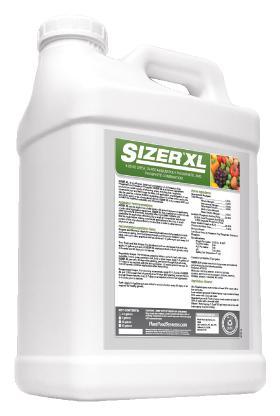

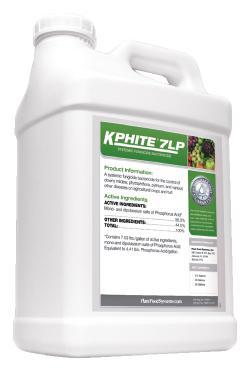
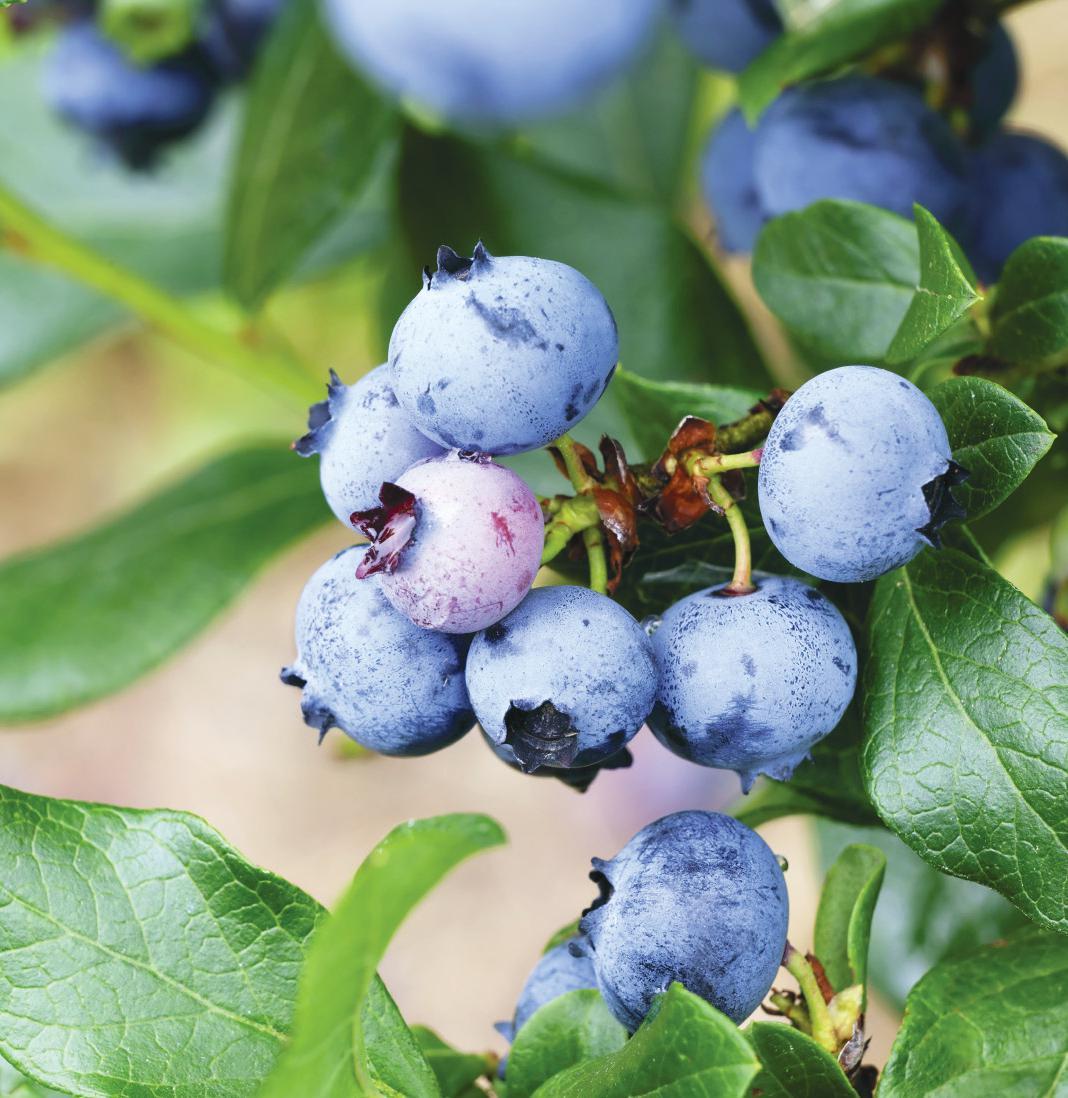
40 | The Blueberry News FloridaBlueberryGrowers.org THE SYSTEMIC COMBINATION FOR A S U P ERIOR B LUEBER R Y CR O P 800 -343 -77 75 • P.O. B OX 7 75 • ZEL LWOO D, FL 3 2798 • PlantFoodSystems com K-PHITE ® 7LP and Sizer® XL are registered trademarks of Plant Food Systems, Inc &
















 photo by BRITTANY LEE
photo by BRITTANY LEE























































































































 CREDIT by JEFF WILLIAMSON, Horticultural Sciences Department, UF & DOUG PHILLIPS, UF/IFAS Blueberry Extension Coordinator
CREDIT by JEFF WILLIAMSON, Horticultural Sciences Department, UF & DOUG PHILLIPS, UF/IFAS Blueberry Extension Coordinator
























